Search Result
Results for "
food additives
" in MedChemExpress (MCE) Product Catalog:
40
Biochemical Assay Reagents
13
Isotope-Labeled Compounds
| Cat. No. |
Product Name |
Target |
Research Areas |
Chemical Structure |
-
- HY-Y1324
-
|
Disodium hydrogen phosphate dodecahydrate; Disodium phosphate dodecahydrate
|
Biochemical Assay Reagents
|
Others
|
|
Sodium phosphate dibasic dodecahydrate (Disodium hydrogen phosphate dodecahydrate), as a food additive, can be used to improve the texture of food .
|
-
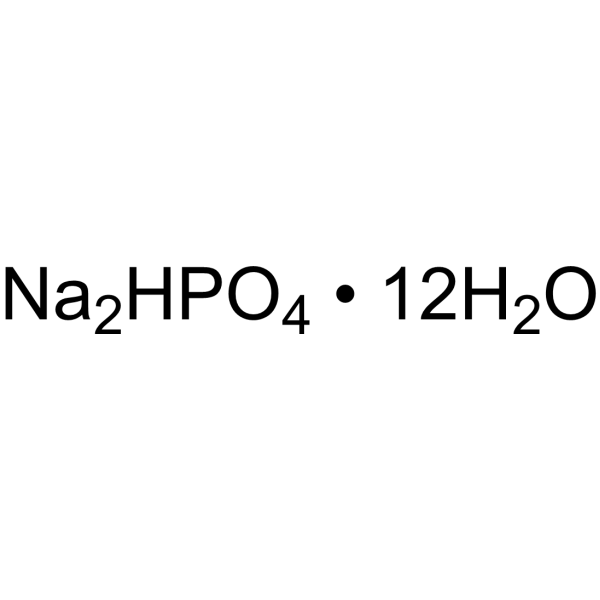
-
- HY-N7079
-
|
D-Isoascorbic acid; D-Araboascorbic acid
|
Biochemical Assay Reagents
|
Others
|
|
Erythorbic acid (D-Isoascorbic acid), produced from sugars derived from different sources, such as beets, sugar cane, and corn, is a food additive used predominantly in meats, poultry, and soft drinks.
|
-
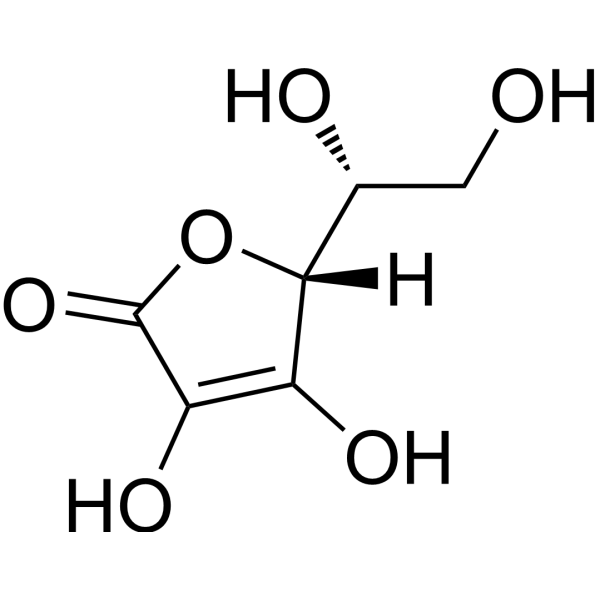
-
- HY-N0216
-
|
|
Bacterial
Fungal
Endogenous Metabolite
|
Infection
|
|
Benzoic acid is an aromatic alcohol existing naturally in many plants and is a common additive to food, drinks, cosmetics and other products. It acts as preservatives through inhibiting both bacteria and fungi .
|
-
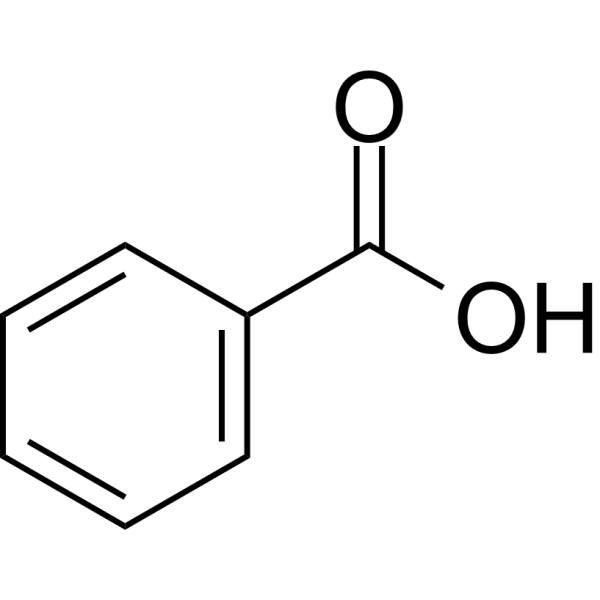
-
- HY-157729
-
|
|
Fungal
|
Others
|
|
1-Undecanoylglycerol is a monoacylglycerol with antibacterial activity, which can be used in food additives research .
|
-
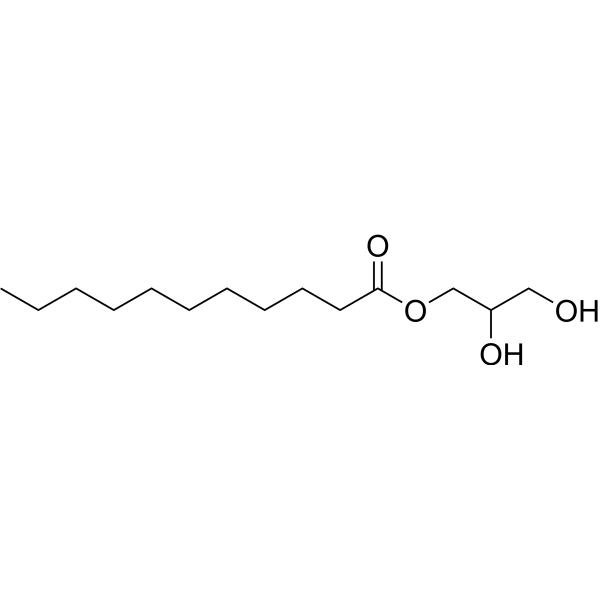
-
- HY-W337739
-
|
Monopotassium L-glutamate
|
Others
|
Others
|
|
L-Glutamic acid monopotassium salt is a food additive and flavor enhancer that can reduce the harmful effects of lithium .
|
-
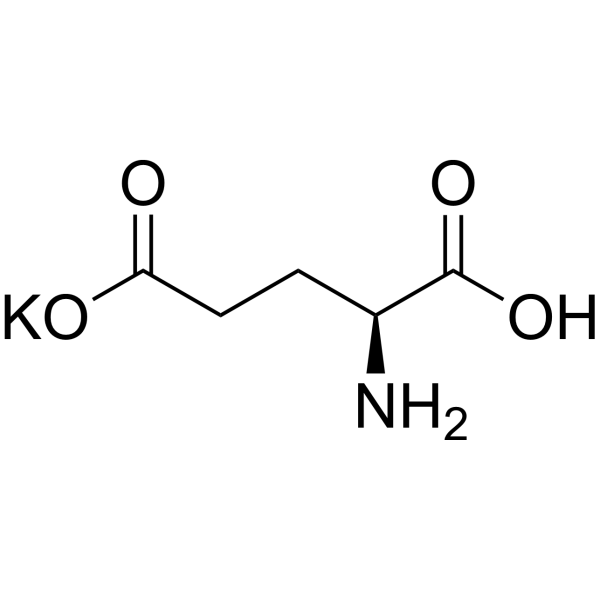
-
- HY-W105970
-
|
Disodium pyrophosphate; Sodium acid pyrophosphate; SAPP
|
Biochemical Assay Reagents
|
Inflammation/Immunology
|
|
Sodium pyrophosphate (Disodium pyrophosphate), a food additive, is an inorganic compound. Sodium pyrophosphate has potential hematotoxic and immunotoxic effects .
|
-
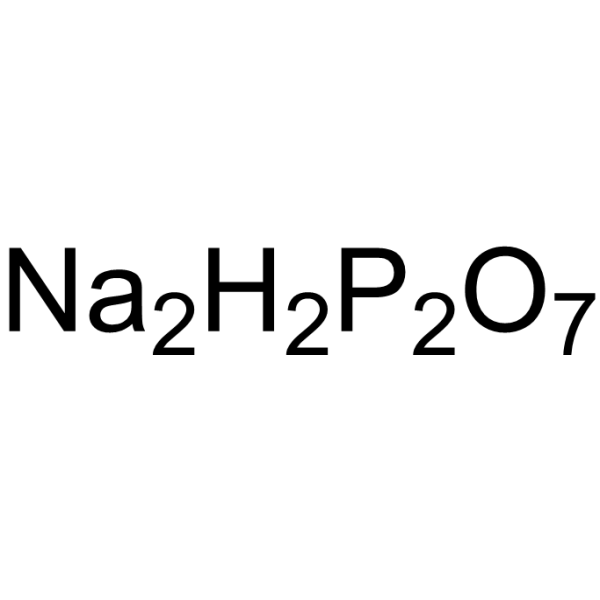
-
- HY-128448
-
-

-
- HY-W145499
-
-
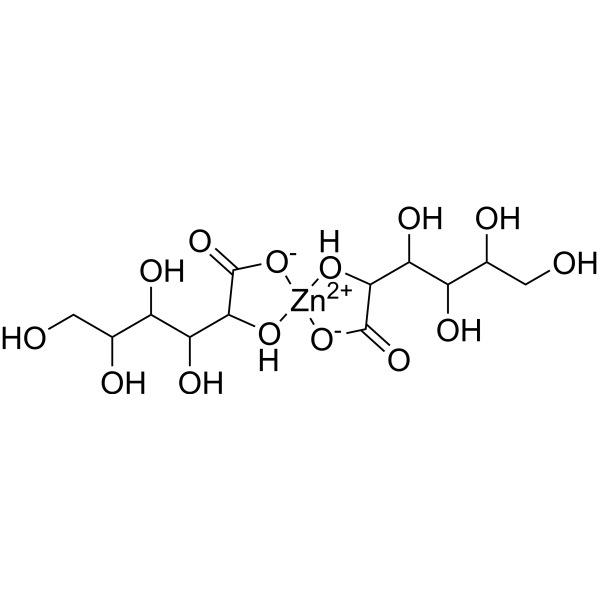
-
- HY-135297
-
|
|
Biochemical Assay Reagents
|
Others
|
|
Mono-and diglycerides is formed by triglycerides being broken down by pancreatic lipase in the gastrointestinal lumen. Mono-and diglycerides is a food additive used as a nonionic emulsifier and mainly present in food fats .
|
-

-
- HY-N0455D
-
|
(S)-(+)-Arginine butanoate
|
Others
|
Others
|
|
L-Arginine butanoate ((S)-(+)-Arginine butanoate) is a compound consisting of L-Arginine and butanoate. L-Arginine is one of the essential nutrients in the human body and participates in various biochemical processes. Butanoate is a short-chain fatty acid commonly used as a food additive and solvent in pharmaceutical formulations .
|
-
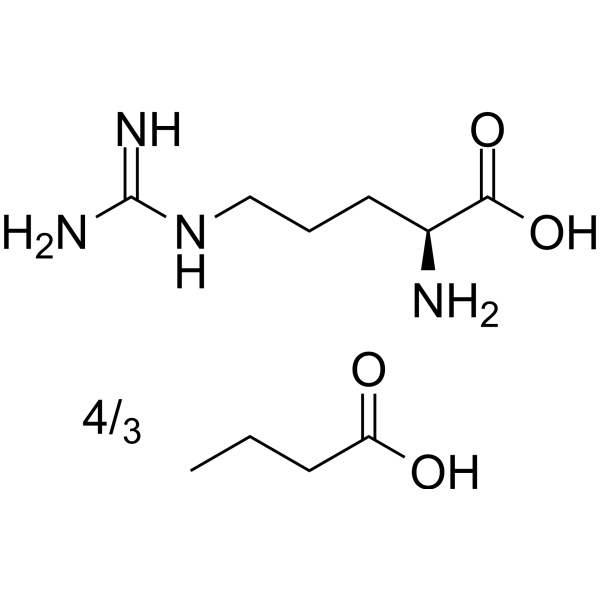
-
- HY-135087
-
|
|
Biochemical Assay Reagents
|
Others
|
|
Caprylic/Capric Triglyceride is the triglycerides and esters prepared from fractionated vegetable oil sources and fatty acids from coconuts and palm kernel oils. Caprylic/Capric Triglyceride possesses excellent oxidation stability. Caprylic/Capric Triglyceride is used as a food additive and used in cosmetics .
|
-
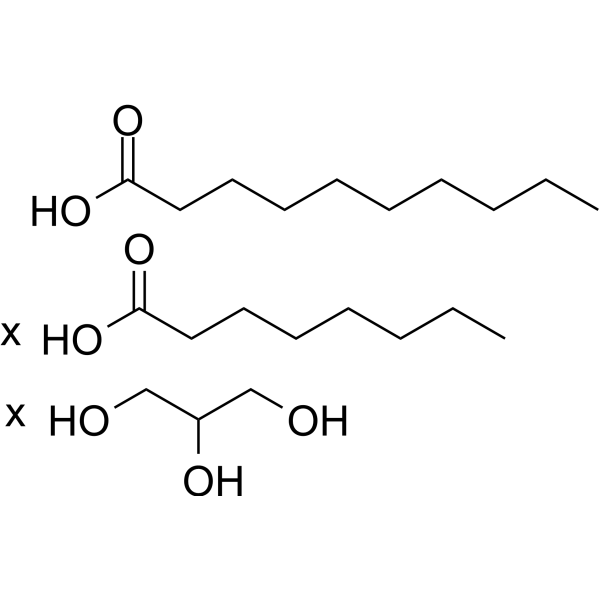
-
- HY-W127787
-
|
L-(+)-Tartaric acid sodium hydrate
|
Endogenous Metabolite
|
Others
|
|
L-Tartaric acid (L-(+)-Tartaric acid) sodium hydrate is the enantiomer of D-tartaric acid. L-Tartaric acid (HY-Y0293) is a white crystalline dicarboxylic acid found in many plants, such as grapes, and is one of the main organic acids in wine. L-Tartaric acid sodium hydrate which acts as a flour bulking agent and as a food additive can interact with sodium bicarbonate to produce carbon dioxide .
|
-
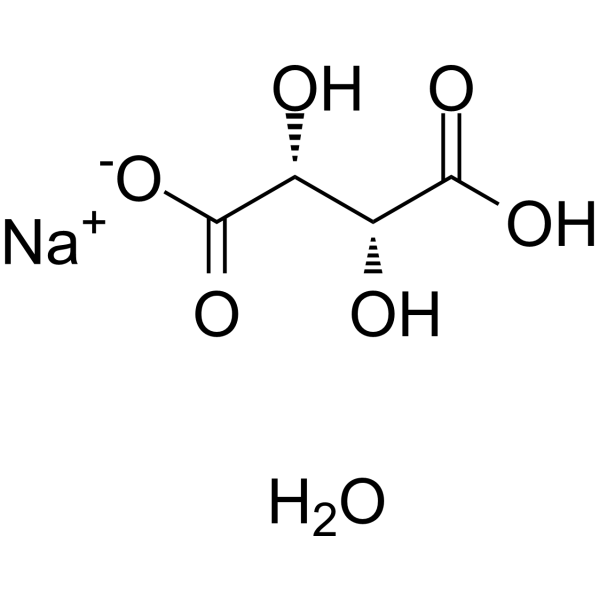
-
- HY-119309
-
|
|
Biochemical Assay Reagents
|
Others
|
|
Sucrose octaacetate is an acetylated derivative of sucrose with an intensely bitter tasting and can be used as bitter tasting surrogate. Sucrose octaacetate can be used as food additive and also used as an adhesive and plasticizer. Sucrose octaacetate also used in many pesticides, insecticides, and other toxic products as a deterrent to accidental poisoning. Sucrose octaacetate can also be used as an in situ seed and a soft template to synthesize polyaniline (PANI) nanofibers .
|
-

-
- HY-W027872
-
-

-
- HY-B1173
-
|
D-(+)-Camphor; (1R)-(+)-Camphor
|
Bacterial
|
Others
|
|
(+)-Camphor is a food additive used medicinally as a preservative.
|
-

-
- HY-B0934
-
|
Ethyl parahydroxybenzoate; Ethyl 4-hydroxybenzoate
|
Bacterial
Fungal
|
Others
|
|
Ethylparaben is the ethyl ester of paraben and is used as an antifungal preservative and food additive .
|
-
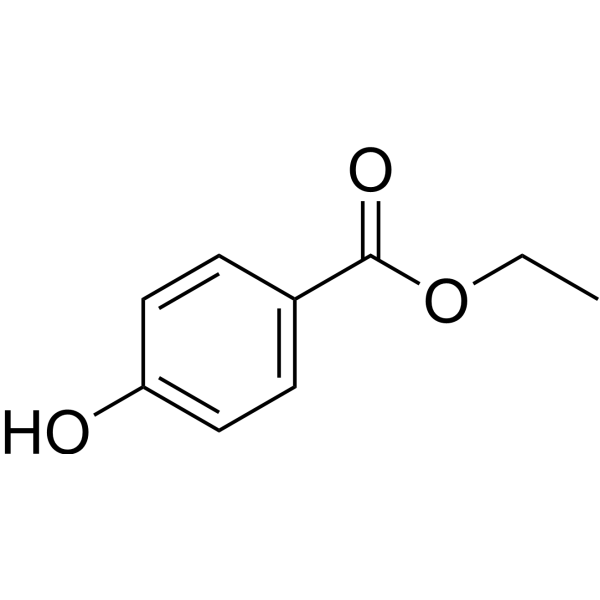
-
- HY-B0922
-
-
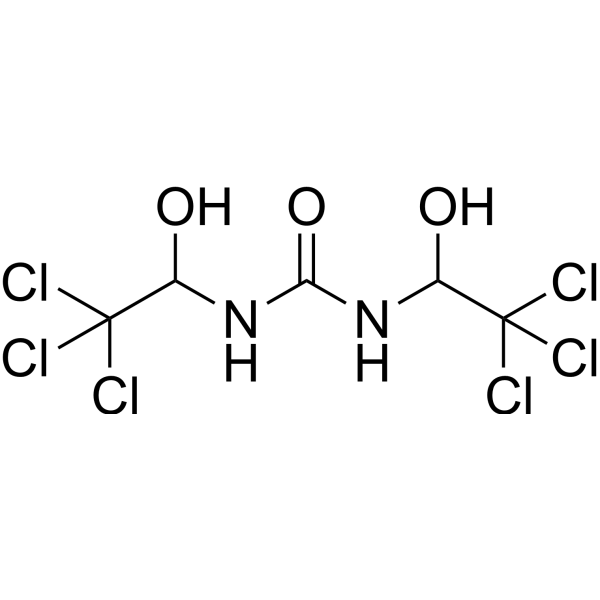
-
- HY-113027
-
|
|
Endogenous Metabolite
|
Others
|
|
p-Hydroxymandelic acid is a valuable aromatic fine chemical and widely used for production of pharmaceuticals and food additives.
|
-
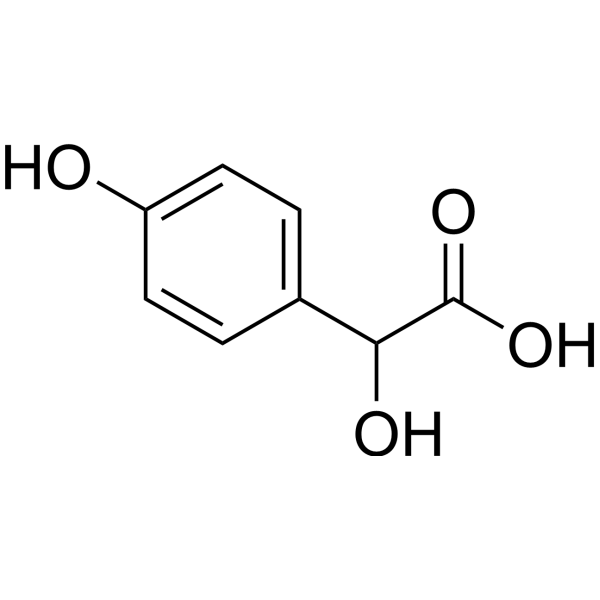
-
- HY-122351A
-
|
|
Others
|
Others
|
|
Advantame is a non-caloric artificial sweetener, analogue of aspartame, commonly used as a food additive .
|
-

-
- HY-100551
-
|
|
|
|
|
meso-Erythritol is a sugar alcohol that occurs naturally in a variety of foods (e.g., pear, watermelon), is 60-80% as sweet as sucrose, and is an approved low-calorie sweetener food additive .
|
-
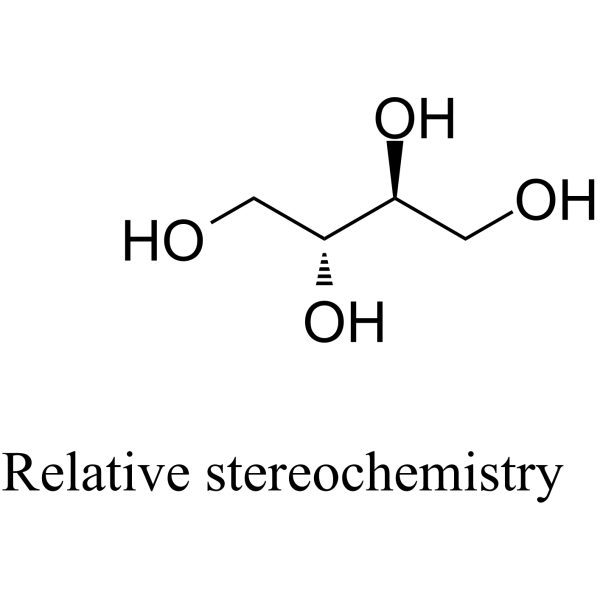
-
- HY-B0987
-
|
L-Ascorbic acid 6-hexadecanoate; 6-O-Palmitoyl-L-ascorbic acid
|
Reactive Oxygen Species
Endogenous Metabolite
|
Cancer
|
|
Ascorbyl palmitate is an ester formed from ascorbic acid and palmitic acid creating an vitamin C, it is also used as an antioxidant food additive.
|
-
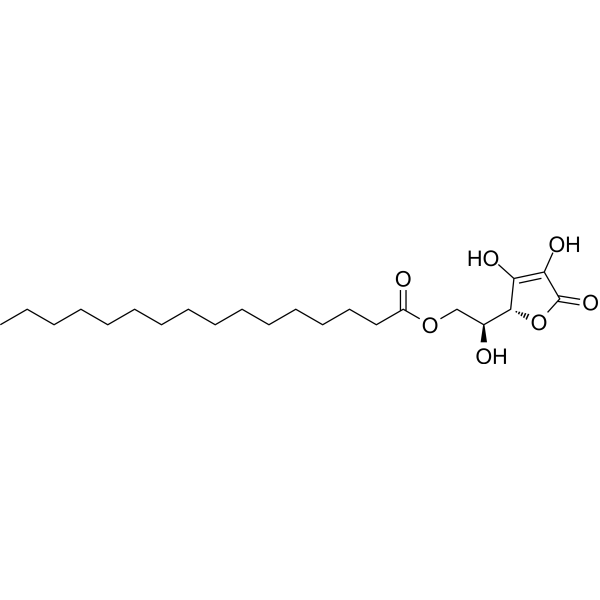
-
- HY-W014884
-
|
Decanoic Acid Ethyl Ester
|
Biochemical Assay Reagents
|
Others
|
|
Ethyl decanoate is an organic compound commonly used as a flavoring and food additive. It can be used to prepare flavors and food seasonings with various flavors, and is widely used in food, flavors and cosmetics. In addition, this compound is also used as a substrate or intermediate in some biochemical reactions.
|
-
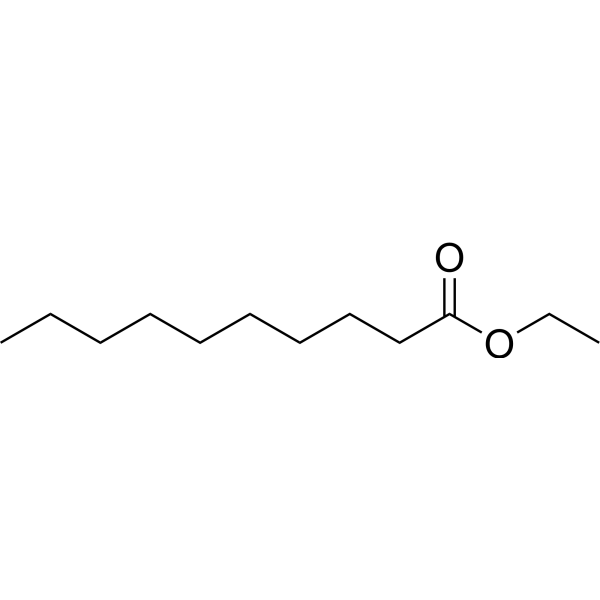
-
- HY-D0887
-
|
IMP disodium salt; Disodium inosinate
|
Biochemical Assay Reagents
|
Metabolic Disease
|
|
Disodium 5'-inosinate, obtained from bacterial fermentation of sugars, is as a food additive and often found in a variety of other snacks.
|
-
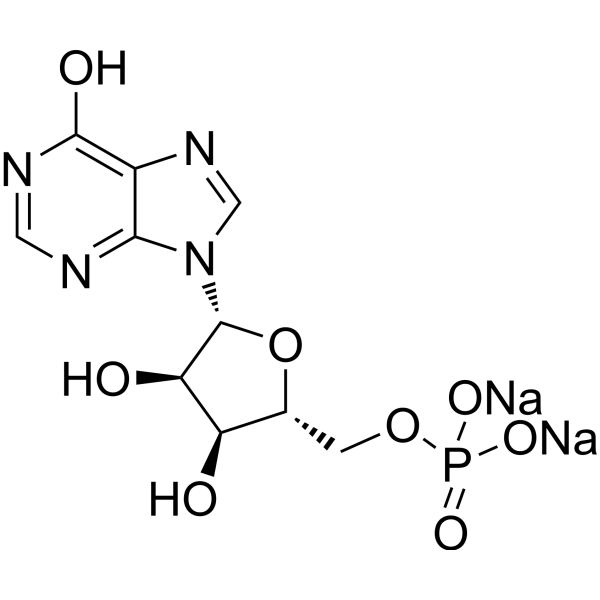
-
- HY-Y1069S
-
|
(S)-Hydroxybutanedioic acid-d3; (S)-E 296-d3
|
Endogenous Metabolite
|
Metabolic Disease
|
|
(S)-Malic acid-d3 is the deuterium labeled (S)-Malic acid. (S)-Malic acid ((S)-2-Hydroxysuccinic acid) is a dicarboxylic acid in naturally occurring form, contributes to the pleasantly sour taste of fruits and is used as a food additive[1][2].
|
-

-
- HY-W012845A
-
|
|
Biochemical Assay Reagents
|
Others
|
|
(E)-3-(2-Furyl)acrolein, derived from 2-acid-acid-rich acid reaction, is used in food, cosmetics and other fields, medicine and agriculture. In the food industry, (E)-3-(2-Furyl)acrolein, as a natural seasoning food additive, has an important seasoning effect.
|
-

-
- HY-Y1069
-
|
(S)-Hydroxybutanedioic acid; (S)-E 296
|
|
|
|
(S)-Malic acid ((S)-2-Hydroxysuccinic acid) is a dicarboxylic acid in naturally occurring form, contributes to the pleasantly sour taste of fruits and is used as a food additive.
|
-

-
- HY-ER007
-
|
|
|
|
|
Potassium sodium tartrate is a chemical compound belonging to the class of organic salts. It is commonly used as a food additive in the food and beverage industry, especially in baking. Potassium sodium tartrate, also known as Rochelle salt, has a variety of applications in industrial settings, such as the production of electronics and textiles. In addition to its uses in industry and food, it is also used in medical applications as a laxative and in some dental preparations.
|
-

-
- HY-B1431
-
|
Butyl parahydroxybenzoate; Butyl paraben; Butyl 4-hydroxybenzoate
|
Bacterial
Endogenous Metabolite
DNA/RNA Synthesis
|
Infection
|
|
Butylparaben is an organic compound that has proven to be a very successful antimicrobial preservative in cosmetics, can also be used in active molecule suspensions, and as a food flavoring additive .
|
-
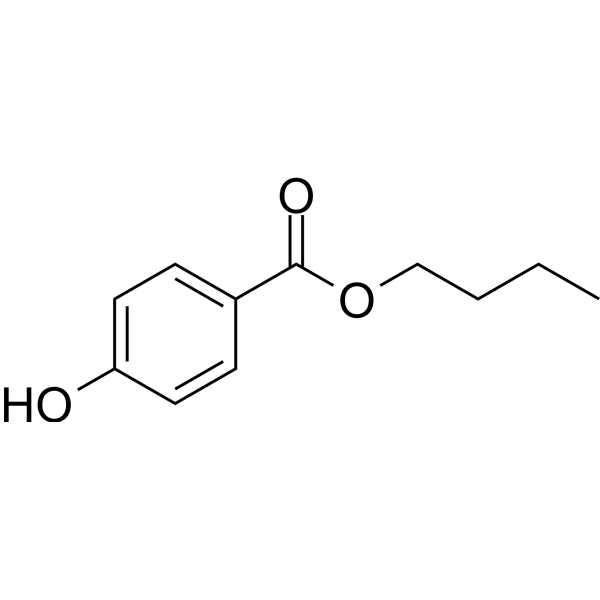
-
- HY-W015307
-
|
|
Biochemical Assay Reagents
|
Others
|
|
4-Ethyloctanoic acid is a natural compound first isolated from Saussurea lappa Clarke, widely used as a safe flavoring compound and acts as food additive .
|
-
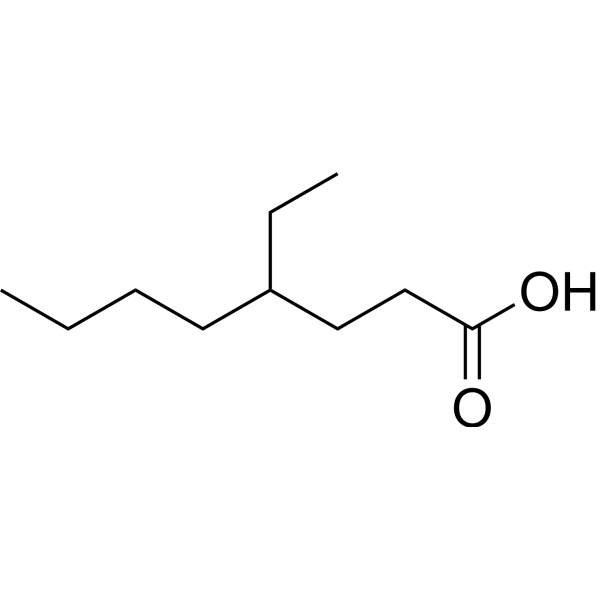
-
- HY-B0934R
-
|
Ethyl parahydroxybenzoate (Standard); Ethyl 4-hydroxybenzoate (Standard)
|
Bacterial
Fungal
|
Others
|
|
Ethylparaben (Standard) is the analytical standard of Ethylparaben. This product is intended for research and analytical applications. Ethylparaben is the ethyl ester of paraben and is used as an antifungal preservative and food additive .
|
-
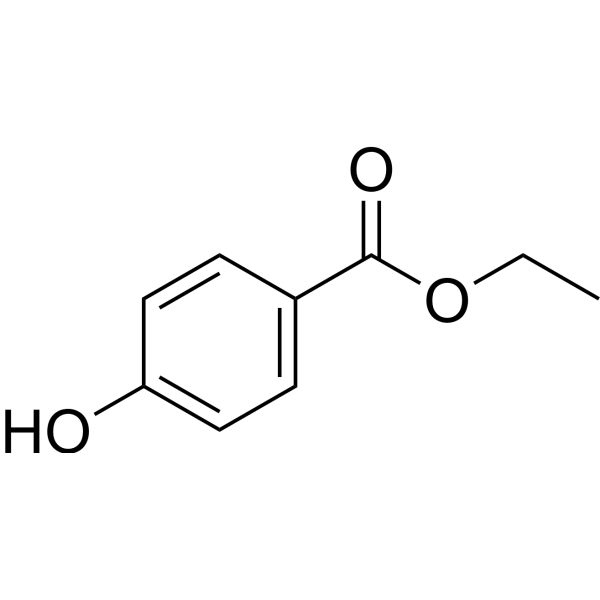
-
- HY-W010320
-
|
2-Ethyl-3-hydroxy-4H-pyran-4-one
|
Biochemical Assay Reagents
|
Others
|
|
Ethyl maltol (2-Ethyl-3-hydroxy-4H-pyran-4-one), an odor-active (OA) compound, is an important food additive and the main component of a type of incense added to food .
|
-
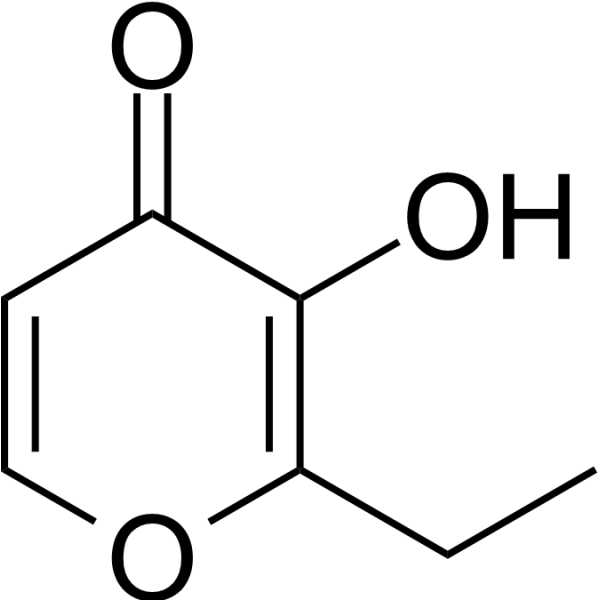
-
- HY-W009684
-
|
Ethyl dodecanoate
|
Biochemical Assay Reagents
|
Others
|
|
Ethyl Laurate is an organic compound commonly used as a flavoring and food additive. It can be used to make fruit, mint and sweet flavors, and is widely used in some food processing and cosmetic production. In addition, this compound is also used as a reagent and intermediate in some organic synthesis reactions.
|
-
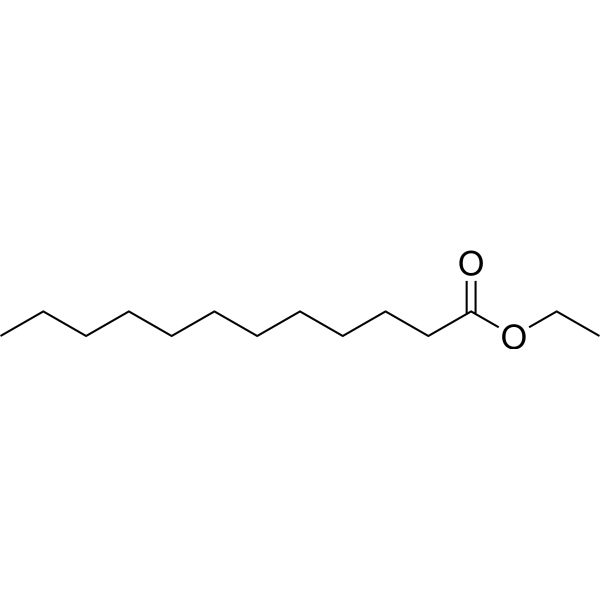
-
- HY-W010320S
-
|
2-Ethyl-3-hydroxy-4H-pyran-4-one-d5
|
Isotope-Labeled Compounds
|
Others
|
|
Ethyl maltol-d5 is the deuterium labeled Ethyl maltol. Ethyl maltol (2-Ethyl-3-hydroxy-4H-pyran-4-one), an odor-active (OA) compound, is an important food additive and the main component of a type of incense added to food[1][2].
|
-

-
- HY-W009443
-
|
Diethyl sebacate
|
Biochemical Assay Reagents
|
Others
|
|
Diethyl decanedioate is an organic compound commonly used as a raw material for flavors and food additives. It can be used to make fruit and mint flavors, and is widely used in some food processing and cosmetic production. In addition, this compound is also used as a reagent and intermediate in some organic synthesis reactions.
|
-
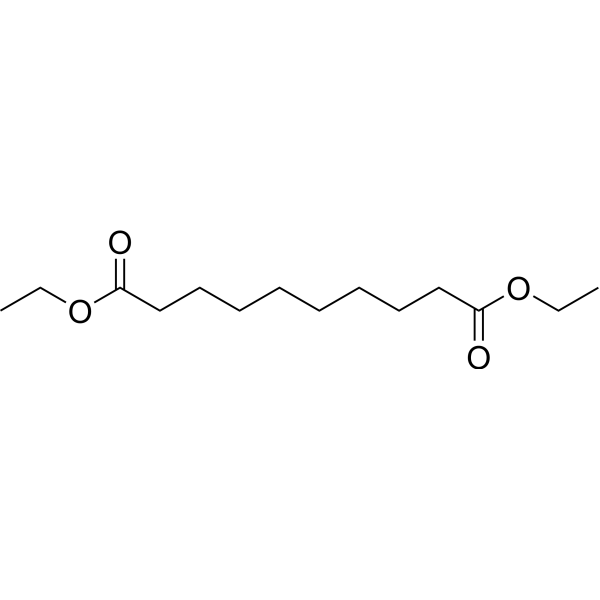
-
- HY-N7079A
-
|
D-Isoascorbic acid sodium; D-Araboascorbic acid sodium
|
Biochemical Assay Reagents
|
Cancer
|
|
Sodium erythorbate (D-Isoascorbic acid sodium), produced from sugars derived from different sources, such as beets, sugar cane, and corn, is a food additive used predominantly in meats, poultry, and soft drinks.
|
-
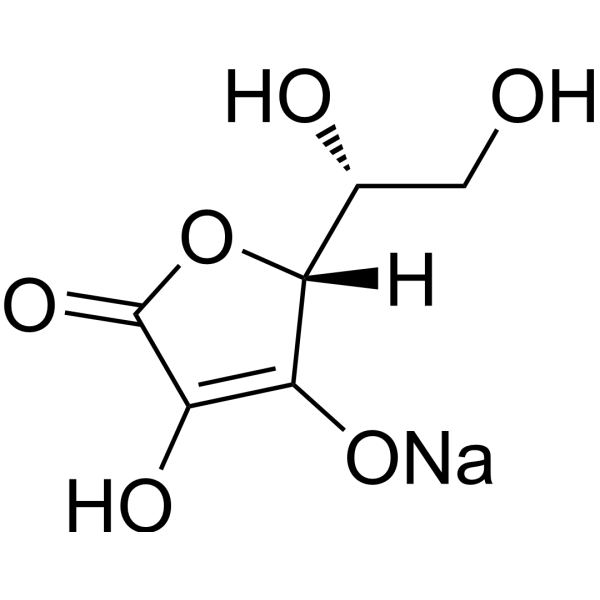
-
- HY-N0216A
-
|
|
|
|
|
Benzoic acid lithium is an aromatic alcohol found in many plants and is a common additive in food, beverages, cosmetics and other products. Benzoic acid lithium inhibits bacteria and fungi and acts as a preservative .
|
-
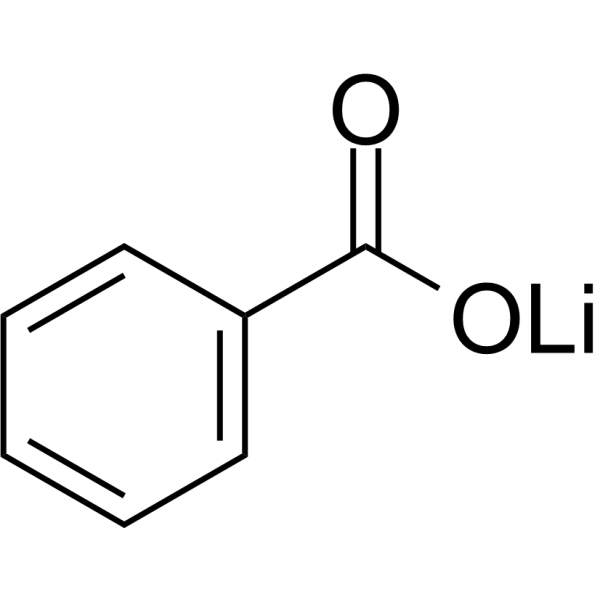
-
- HY-B2221
-
|
Pectin glycosidase
|
Endogenous Metabolite
|
Others
|
|
Cellulose (Pectin glycosidase) is a natural high molecular weight polysaccharide found in many plants and organisms. It is widely used in manufacturing industries, such as in paper making, textiles, food and medicine, etc. As a renewable resource, Cellulose is biodegradable and sustainable, and can also be used to manufacture chemicals such as Cellulose Esters, Cellulose Acetate and Cellulose Nitrate. In addition, Cellulose is often used as a food additive to increase the stability and quality of food.
|
-

-
- HY-B1431S
-
|
Butyl parahydroxybenzoate-d4; Butyl paraben-d4; Butyl 4-hydroxybenzoate-d4
|
Isotope-Labeled Compounds
Bacterial
Endogenous Metabolite
|
Infection
|
|
Butylparaben-d4 is the deuterium labeled Butylparaben. Butylparaben is an organic compound, has proven to be a highly successful antimicrobial preservative in cosmetics, also used in medication suspensions, and as a flavoring additive in food.
|
-
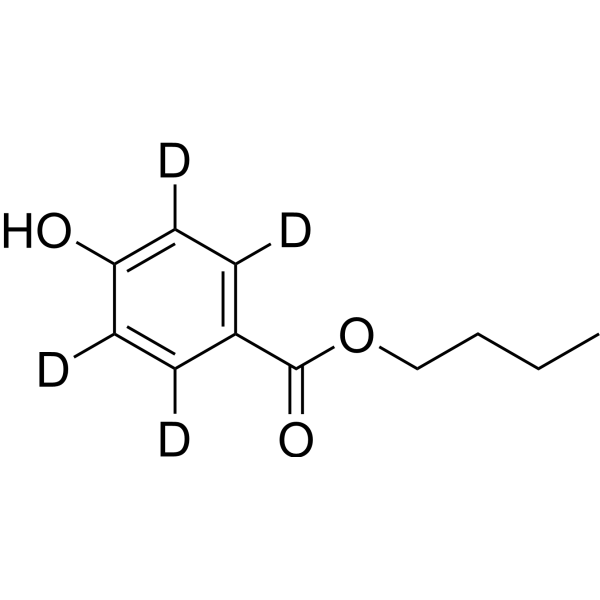
-
- HY-W133982
-
|
|
Biochemical Assay Reagents
|
Infection
|
|
Corn steep liquor, a food industrial by-product, is a nutritional additive in the liquid culture medium of fungus. Corn steep liquor can increase the production of fairy chemicals and mycelia .
|
-
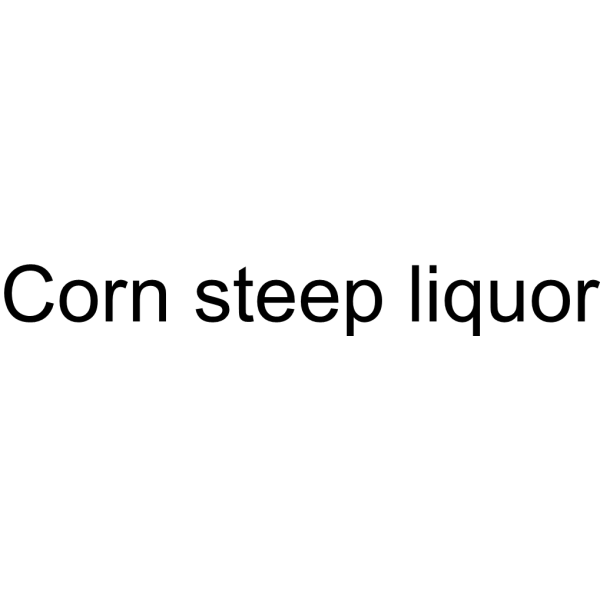
-
- HY-Y0121
-
|
|
Others
|
Others
|
|
Ethyl cinnamate is a fragrance ingredient used in many fragrance compounds. Ethyl cinnamate is a food flavor and additive for cosmetic products. Ethyl cinnamate is also an excellent clearing reagent for mammalian tissues .
|
-
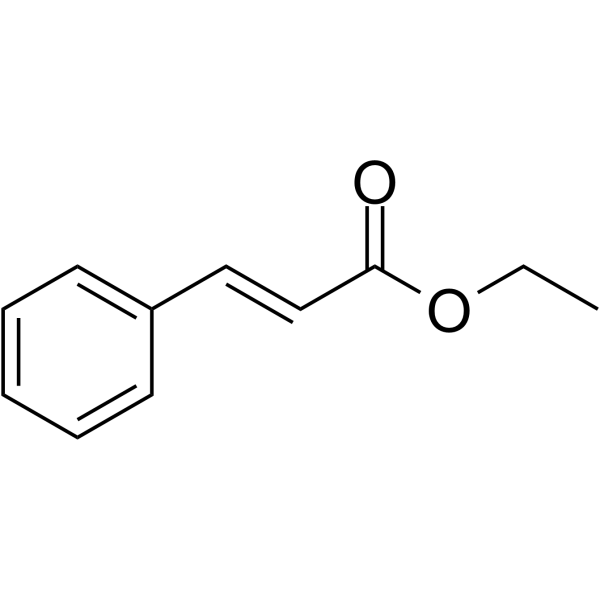
-
- HY-B0987R
-
|
L-Ascorbic acid 6-hexadecanoate (Standard); 6-O-Palmitoyl-L-ascorbic acid (Standard)
|
Reactive Oxygen Species
Endogenous Metabolite
|
Cancer
|
|
Ascorbyl palmitate (Standard) is the analytical standard of Ascorbyl palmitate. This product is intended for research and analytical applications. Ascorbyl palmitate is an ester formed from ascorbic acid and palmitic acid creating an vitamin C, it is also used as an antioxidant food additive.
|
-
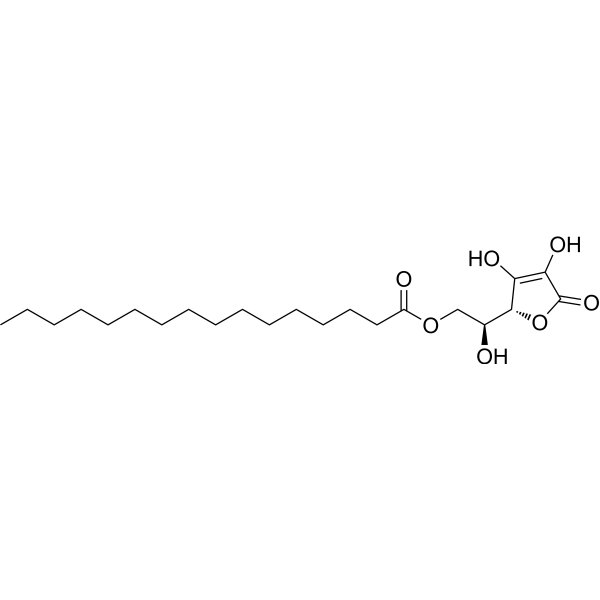
-
- HY-W016278
-
|
|
Biochemical Assay Reagents
|
Others
|
|
Gamma-undecalactone consists of a five-membered dihydrofuran ring with an ester group and a heptyl chain. This compound has a fruity smell and is commonly used as a flavor additive in various food and beverage products such as coffee, tea and baked goods.
|
-

-
- HY-B1431S1
-
|
Butyl parahydroxybenzoate-13C6; Butyl paraben-13C6; Butyl 4-hydroxybenzoate-13C6
|
Bacterial
Endogenous Metabolite
|
Infection
|
|
Butylparaben- 13C6 is the 13C labeled Butylparaben[1]. Butylparaben is an organic compound, has proven to be a highly successful antimicrobial preservative in cosmetics, also used in medication suspensions, and as a flavoring additive in food.
|
-

-
- HY-Y1310
-
|
|
|
|
|
Sodium alginate is the sodium salt of alginic acid. Sodium alginate can be extracted and purified from brown seaweed Laminaria japonica. Sodium alginate can be used in food additives and pharmaceuticals, adsorb heavy metal ions, and has mucosal-protective and hemostatic effects .
|
-

-
- HY-N0216S2
-
|
|
Bacterial
Fungal
Endogenous Metabolite
|
Infection
|
|
Benzoic acid- 13C is the 13C-labeled Benzoic acid. Benzoic acid is an aromatic alcohol existing naturally in many plants and is a common additive to food, drinks, cosmetics and other products. It acts as preservatives through inhibiting both bacteria and fungi.
|
-
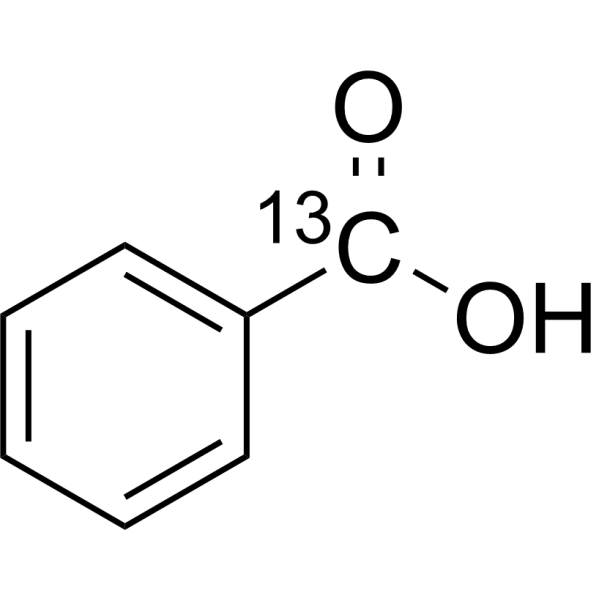
-
- HY-W014118
-
|
|
Others
|
Cancer
|
|
α-Hexylcinnamaldehyde, a compound derived from Cinnamaldehyde. α-Hexylcinnamaldehyde has the potential antimutagenic and chemosensitizing properties. α-Hexylcinnamaldehyde is widely used as an ingredient in many personal care, and as an additive in food and the pharmaceutical industry .
|
-

-
- HY-N0216S1
-
|
|
Bacterial
Fungal
Endogenous Metabolite
|
Infection
|
|
Benzoic acid- 13C6 is the 13C-labeled Benzoic acid. Benzoic acid is an aromatic alcohol existing naturally in many plants and is a common additive to food, drinks, cosmetics and other products. It acts as preservatives through inhibiting both bacteria and fungi.
|
-

-
- HY-W250311
-
|
|
Biochemical Assay Reagents
|
Others
|
|
DL-Aspartic acid (hemimagnesium salt is DL-aspartic acid salt. DL-aspartic acid hemimagnesium salt is a commonly used food supplement and food additive, because it can promote the synthesis of protein in the human body, and has a positive effect on the nervous system and The production of cardiovascular system has a certain protective effect. In addition, due to some chemical reactions in the industry, DL-aspartic acid semi-magnesium salt can also be obtained.
|
-

-
- HY-D1005A11
-
|
PEG-PPG-PEG, 3400 (Averag)
|
Biochemical Assay Reagents
|
Others
|
|
Poloxamer 185 P65 is block polymer of polyoxyethylene and polyoxypropylene with average molecular mass of 3400. Poloxamer 185 P65 forms thermoreversible hydrogel, that is utilized in food additives, drug delivery carriers in cosmetics, pharmaceutical ingredients and tissue engineering .
|
-

-
- HY-D1005A12
-
|
PEG-PPG-PEG, 2750 (Averag)
|
Biochemical Assay Reagents
|
Others
|
|
Poloxamer 212 L72 is block polymer of polyoxyethylene and polyoxypropylene with average molecular mass of 2750. Poloxamer 212 L72 forms thermoreversible hydrogel, that is utilized in food additives, drug delivery carriers in cosmetics, pharmaceutical ingredients and tissue engineering .
|
-

- HY-D1005A13
-
|
PEG-PPG-PEG, 4150 (Averag)
|
Biochemical Assay Reagents
|
Others
|
|
Poloxamer 215 P75 is block polymer of polyoxyethylene and polyoxypropylene with average molecular mass of 4150. Poloxamer 215 P75 forms thermoreversible hydrogel, that is utilized in food additives, drug delivery carriers in cosmetics, pharmaceutical ingredients and tissue engineering .
|
-

- HY-D1005A15
-
|
PEG-PPG-PEG, 4200 (Averag)
|
Biochemical Assay Reagents
|
Others
|
|
Poloxamer 234 P84 is is block polymer of polyoxyethylene and polyoxypropylene with average molecular mass of 4200. Poloxamer 234 P84 forms thermoreversible hydrogel, that is utilized in food additives, drug delivery carriers in cosmetics, pharmaceutical ingredients and tissue engineering .
|
-

- HY-D1005A2
-
|
PEG-PPG-PEG, 1900 (Averag)
|
Biochemical Assay Reagents
|
Others
|
|
Poloxamer 105 L35 is block polymer of polyoxyethylene and polyoxypropylene with average molecular mass of 1900. Poloxamer 105 L35 forms thermoreversible hydrogel, that is utilized in food additives, drug delivery carriers in cosmetics, pharmaceutical ingredients and tissue engineering .
|
-
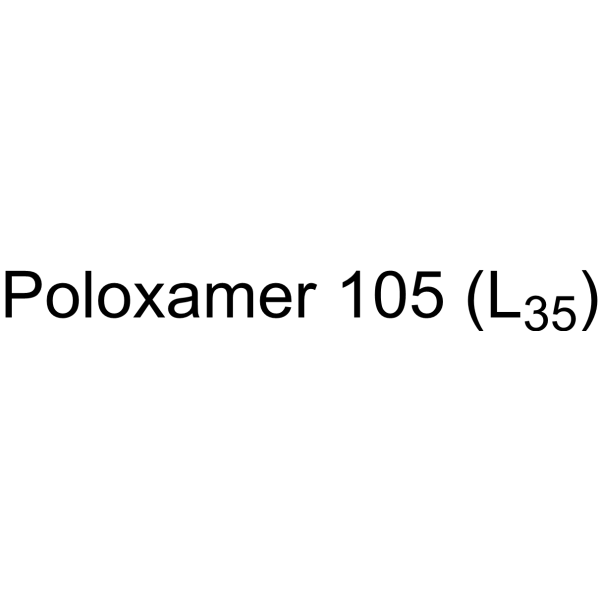
- HY-D1005A20
-
|
PEG-PPG-PEG, 5900 (Averag)
|
Biochemical Assay Reagents
|
Others
|
|
Poloxamer 334 P104 is block polymer of polyoxyethylene and polyoxypropylene with average molecular mass of 5900. Poloxamer 334 P104 forms thermoreversible hydrogel, that is utilized in food additives, drug delivery carriers in cosmetics, pharmaceutical ingredients and tissue engineering .
|
-

- HY-D1005A5
-
|
PEG-PPG-PEG, 1850 (Averag)
|
Biochemical Assay Reagents
|
Others
|
|
Poloxamer 123 L43 is block polymer of polyoxyethylene and polyoxypropylene with average molecular mass of 1850. Poloxamer 123 L43 forms thermoreversible hydrogel, that is utilized in food additives, drug delivery carriers in cosmetics, pharmaceutical ingredients and tissue engineering .
|
-

- HY-D1005A7
-
|
PEG-PPG-PEG, 2400 (Averag)
|
Biochemical Assay Reagents
|
Others
|
|
Poloxamer 125 L45 is block polymer of polyoxyethylene and polyoxypropylene with average molecular mass of 2400. Poloxamer 125 L45 forms thermoreversible hydrogel, that is utilized in food additives, drug delivery carriers in cosmetics, pharmaceutical ingredients and tissue engineering .
|
-

- HY-B2221S5
-
|
|
Isotope-Labeled Compounds
Endogenous Metabolite
|
Others
|
|
U- 13C Cellulose from broccoli is the 13C labeled Cellulose (HY-B2221). Cellulose is a natural high molecular weight polysaccharide found in many plants and organisms. It is widely used in manufacturing industries, such as in paper making, textiles, food and medicine, etc. As a renewable resource, Cellulose is biodegradable and sustainable, and can also be used to manufacture chemicals such as Cellulose Esters, Cellulose Acetate and Cellulose Nitrate. In addition, Cellulose is often used as a food additive to increase the stability and quality of food .
|
-

- HY-B2221S1
-
|
|
Isotope-Labeled Compounds
Endogenous Metabolite
|
Others
|
|
U- 13C Cellulose from chicory is the 13C labeled Cellulose (HY-B2221). Cellulose (Pectin glycosidase) is a natural high molecular weight polysaccharide found in many plants and organisms. It is widely used in manufacturing industries, such as in paper making, textiles, food and medicine, etc. As a renewable resource, Cellulose is biodegradable and sustainable, and can also be used to manufacture chemicals such as Cellulose Esters, Cellulose Acetate and Cellulose Nitrate. In addition, Cellulose is often used as a food additive to increase the stability and quality of food .
|
-
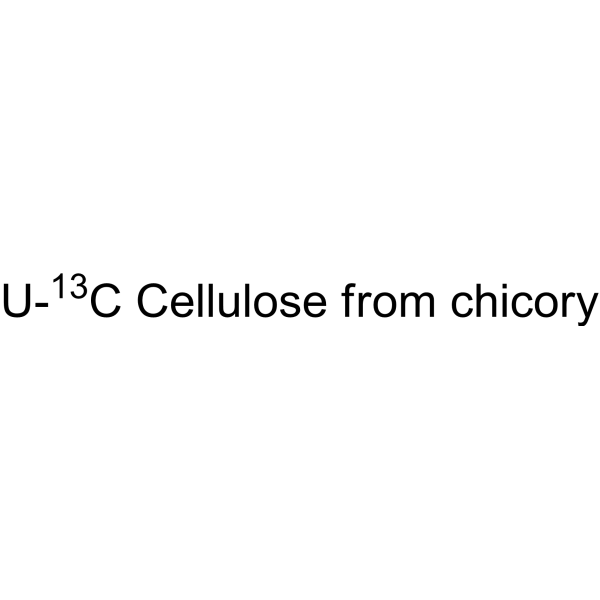
- HY-W250303
-
|
Hydroxybutanedioic acid disodium salt; E 296 disodium salt
|
Biochemical Assay Reagents
|
Others
|
|
Sodium DL-Malate is an organic compound commonly used as a food additive, buffer and nutritional supplement. It contains sodium and malic acid. Malic acid disodium salt has several properties suitable for these applications, including the ability to enhance food flavor, improve texture and regulate acidity. Additionally, it can be used as a dietary supplement due to its potential health benefits, including improved energy production, reduced fatigue, and enhanced athletic performance.
|
-
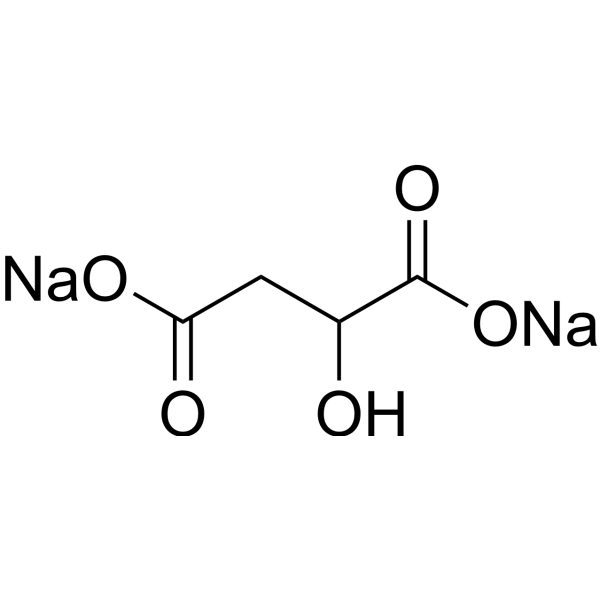
- HY-N7105
-
|
|
Biochemical Assay Reagents
|
Others
|
|
Gamma-decalactone, γ-decalactone is used as an essential food additive with a ruity peach flavor . Ricinoleic acid (12-hydroxy-octadec-9-enoic acid) is used as the substrate in most production processes of γ-decalactone .
|
-
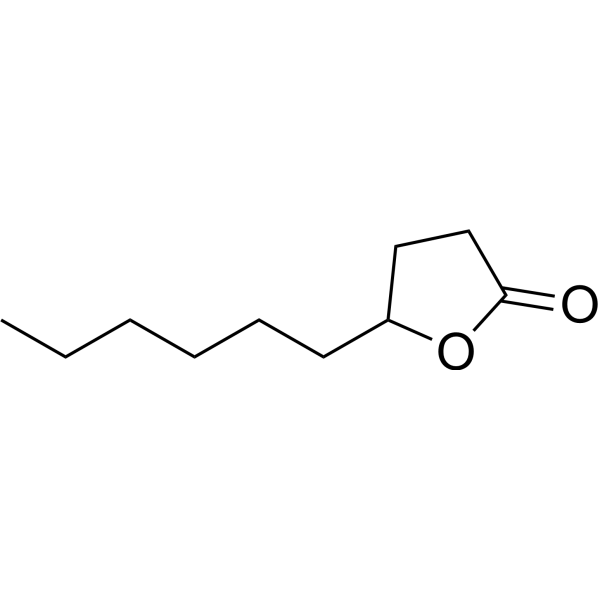
- HY-N0216S
-
|
|
Bacterial
Fungal
Endogenous Metabolite
|
Infection
|
|
Benzoic acid-d5 is a deuterium substitute for Benzoic acid. Benzoic acid is an aromatic alcohol that occurs naturally in many plants and is a common additive in food, beverages, cosmetics and other products. Benzoic acid can act as a preservative by inhibiting bacteria and fungi[1][2].
|
-

- HY-Y0308
-
|
|
|
|
|
Disodium phosphate is commonly used as a food additive, buffer and laboratory reagent. Disodium phosphate has unique chemical properties that make it an important ingredient in the manufacture of fertilizers, detergents and water treatment products. Additionally, it is used in various medical applications such as osmotic laxatives and electrolyte replacement solutions.
|
-
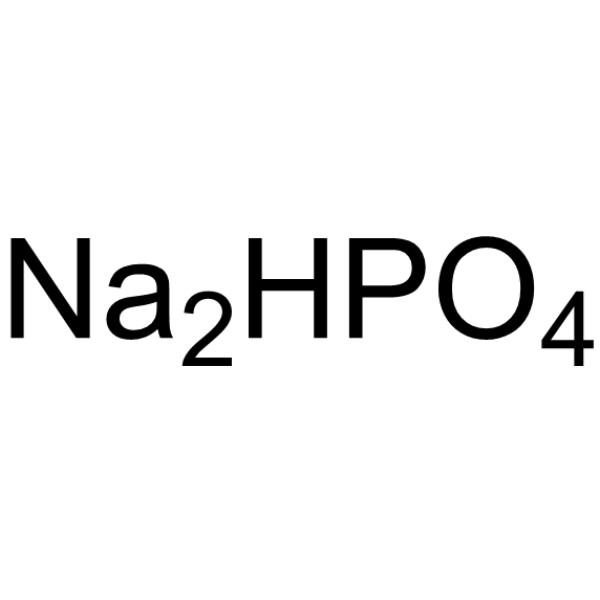
- HY-B2221S
-
|
|
Isotope-Labeled Compounds
Endogenous Metabolite
|
Others
|
|
U- 13C Cellulose high DP from potato is the 13C labeled Cellulose (HY-B2221). Cellulose (Pectin glycosidase) is a natural high molecular weight polysaccharide found in many plants and organisms. It is widely used in manufacturing industries, such as in paper making, textiles, food and medicine, etc. As a renewable resource, Cellulose is biodegradable and sustainable, and can also be used to manufacture chemicals such as Cellulose Esters, Cellulose Acetate and Cellulose Nitrate. In addition, Cellulose is often used as a food additive to increase the stability and quality of food .
|
-
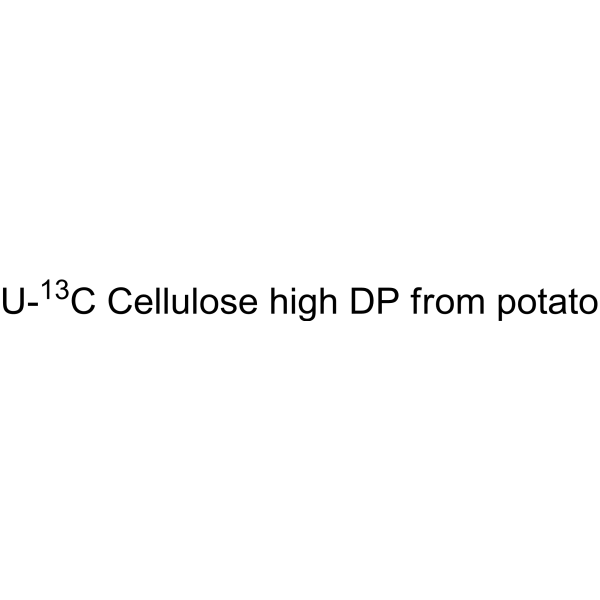
- HY-B2221S3
-
|
|
Isotope-Labeled Compounds
Endogenous Metabolite
|
Others
|
|
U- 13C Cellulose high DP from maize is the 13C labeled Cellulose (HY-B2221). Cellulose (Pectin glycosidase) is a natural high molecular weight polysaccharide found in many plants and organisms. It is widely used in manufacturing industries, such as in paper making, textiles, food and medicine, etc. As a renewable resource, Cellulose is biodegradable and sustainable, and can also be used to manufacture chemicals such as Cellulose Esters, Cellulose Acetate and Cellulose Nitrate. In addition, Cellulose is often used as a food additive to increase the stability and quality of food .
|
-
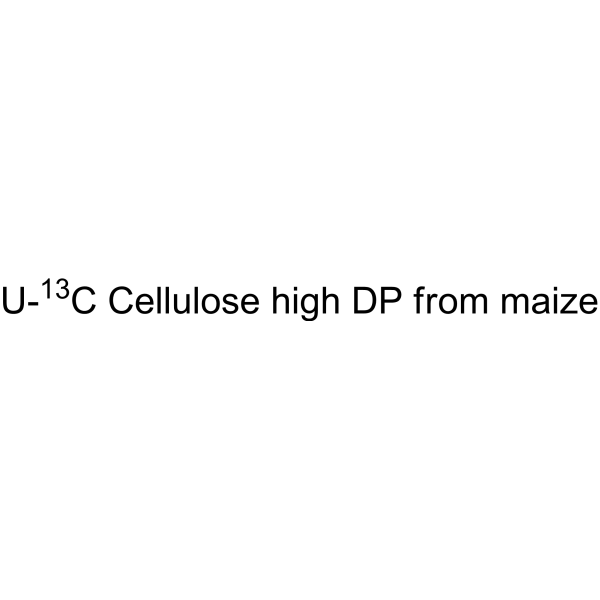
- HY-N1389
-
|
Carmine red
|
|
|
|
Carmine (Carmine red), a natural red dye extracted from the dried females of the insect Dactylopius coccus var. Costa (cochineal). Carmine is a widely used food additive. Carmine provokes both an immediate hypersensitivity and a delayed systemic response with cutaneous expression .
|
-

- HY-B1066
-
|
Butylated hydroxyanisole; BHA; E320
|
Reactive Oxygen Species
Ferroptosis
|
Neurological Disease
Inflammation/Immunology
|
|
Butylhydroxyanisole (Butylated hydroxyanisole) is an antioxidant used as a food additive preservative. Butylhydroxyanisole mediates liver toxicity, retardation in reproductive organ development and learning, and sleep deficit. Butylhydroxyanisole exerts neurotoxic effects and leads to disruption of the brain and nerve development . Butylhydroxyanisole is a ferroptosis inducer .
|
-
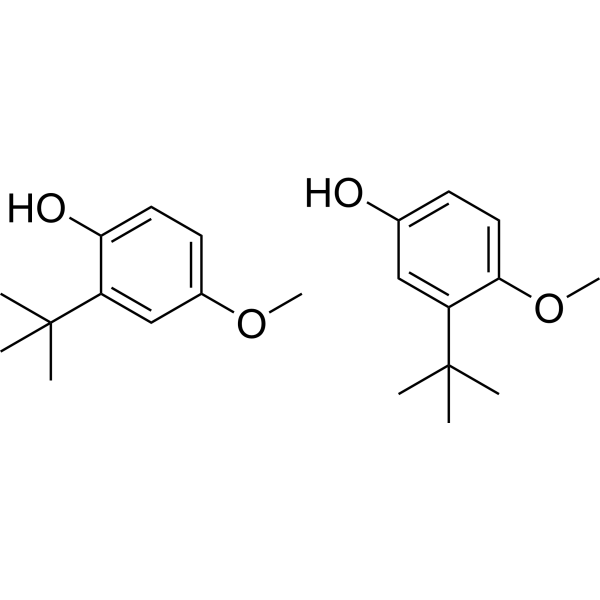
- HY-W012399
-
|
|
Lipoxygenase
COX
|
Inflammation/Immunology
|
|
2,5-Di-tert-butylhydroquinone (DTBHQ), the indirect food additive, regulates the activity of 5-lipoxygenase as well as the activity of COX-2 (IC50=1.8 and 14.1 μM for 5-LO and COX-2, respectively) .
|
-
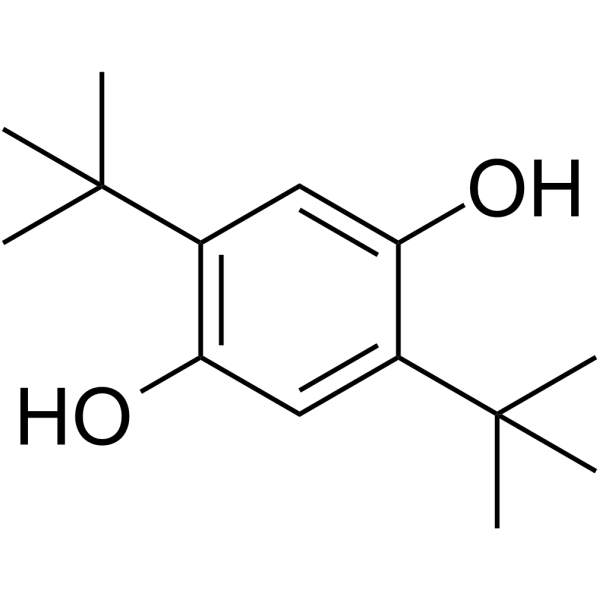
- HY-W005355
-
|
|
Biochemical Assay Reagents
|
Others
|
|
Sodium 2-oxobutanoate is an organic compound commonly used as a food additive and industrial raw material. It can be used as an acidity regulator, leavening agent and preservative, and is often used in the fields of bread, baked goods and canning. In addition, the compound is used in the production of certain industrial products, such as in plastics, textiles and dyes.
|
-
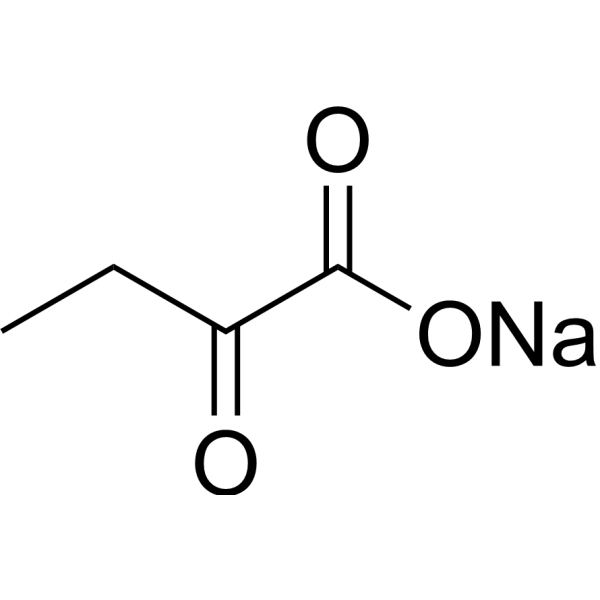
- HY-Y0121S
-
|
|
Isotope-Labeled Compounds
|
Others
|
|
Ethyl cinnamate-d5 is the deuterium labeled Ethyl cinnamate[1]. Ethyl cinnamate is a fragrance ingredient used in many fragrance compounds. Ethyl cinnamate is a food flavor and additive for cosmetic products. Ethyl cinnamate is also an excellent clearing reagent for mammalian tissues[2][3].
|
-
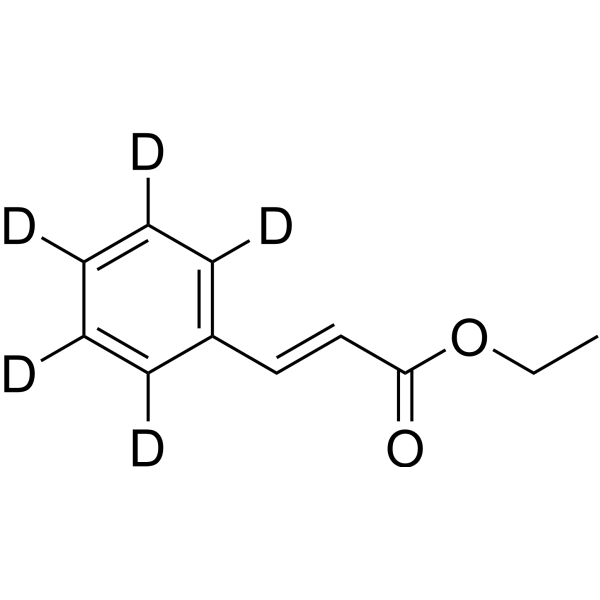
- HY-45072
-
|
|
Biochemical Assay Reagents
|
Others
|
|
Croscarmellose sodium is a commonly used pharmaceutical additive approved by the US Food and Drug Administration (FDA). Croscarmellose sodium is used in injectable preparations as a suspending agent to promote solubilization of compounds with poor water solubility. Croscarmellose sodium is also present in tablets as binder, glidant and antiadherent, in bulk laxatives as active principle and as an additive in food products. Croscarmellose sodium can be used as an excipient, such as excipients, disintegrants, aids in disintegration. Pharmaceutical excipients, or pharmaceutical auxiliaries, refer to other chemical substances used in the pharmaceutical process other than pharmaceutical ingredients. Pharmaceutical excipients generally refer to inactive ingredients in pharmaceutical preparations, which can improve the stability, solubility and processability of pharmaceutical preparations. Pharmaceutical excipients also affect the absorption, distribution, metabolism, and elimination (ADME) processes of co-administered drugs .
|
-
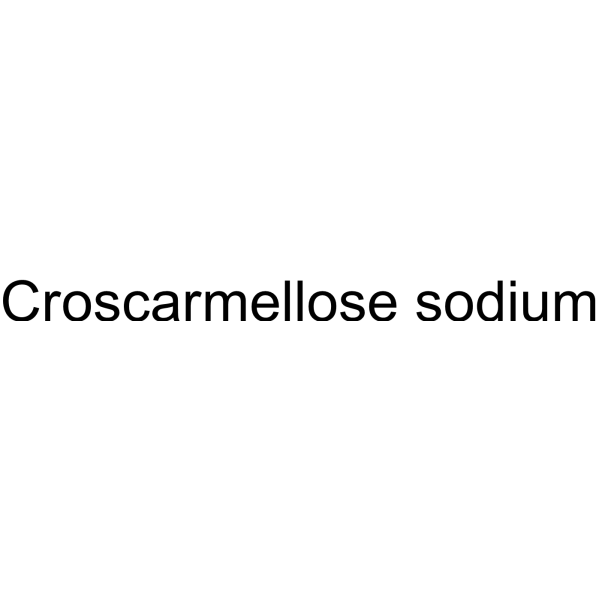
- HY-N8022
-
|
Lucidin 3-O-β-primeveroside
|
Biochemical Assay Reagents
|
Cancer
|
|
Lucidin primeveroside (Lucidin 3-O-β-primeveroside) is an anthraquinone derivative present in madder root, which has been used as a coloring agent and food additive. Lucidin primeveroside can be metabolically converted to genotoxic compound Lucidin, which subsequently forms lucidin-specific DNA adducts .
|
-
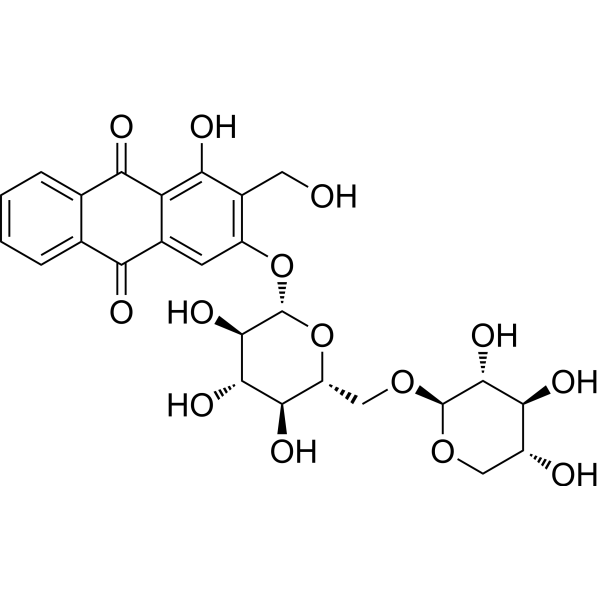
- HY-P1032S
-
|
|
Isotope-Labeled Compounds
Endogenous Metabolite
|
Others
|
|
Angiotensin I- 13C19, 15N3 (human, mouse, rat) is the 13C and 15N labeled Angiotensin I (human, mouse, rat) (HY-P1032). Cellulose (Pectin glycosidase) is a natural high molecular weight polysaccharide found in many plants and organisms. It is widely used in manufacturing industries, such as in paper making, textiles, food and medicine, etc. As a renewable resource, Cellulose is biodegradable and sustainable, and can also be used to manufacture chemicals such as Cellulose Esters, Cellulose Acetate and Cellulose Nitrate. In addition, Cellulose is often used as a food additive to increase the stability and quality of food .
|
-
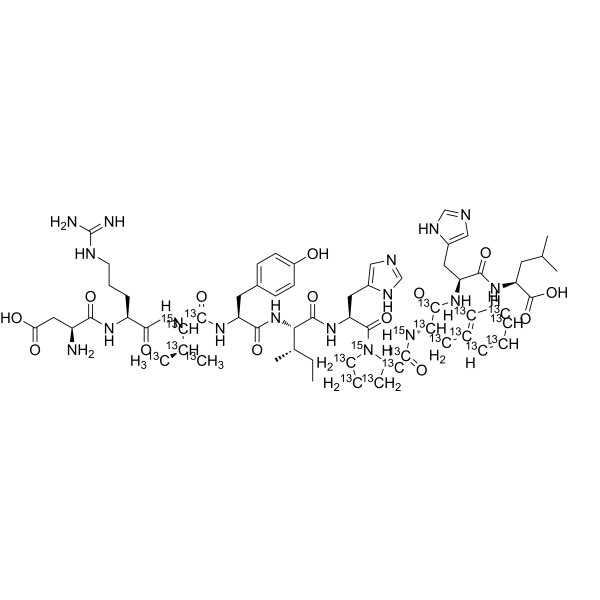
- HY-N2011
-
|
n-Octyl gallate; Stabilizer GA 8
|
|
|
|
Octyl gallate (Progallin O) is widely used as a food additive, with antimicrobial and antioxidant activity . Octyl gallate (Progallin O) shows selective and sensitive fluorescent property . Octyl gallate shows a marked antiviral effect against HSV-1, vesicular stomatitis virus (VSV) and poliovirus .
|
-
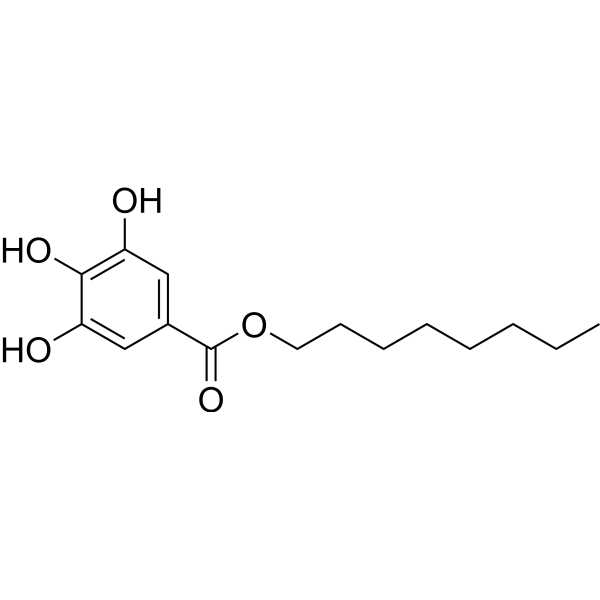
- HY-N0420
-
|
Wormwood acid
|
Endogenous Metabolite
|
Neurological Disease
|
|
Succinic acid is an anti-anxiety agent with oral activity. Disodium succinate is the salt form of Succinic acid. Succinic acid is an intermediate product of the tricarboxylic acid cycle. Succinic acid is an important platform chemical. Succinic acid can be used as surfactant, additive, ion chelating agent, flavoring agent and other applications in chemical, pharmaceutical and food fields .
|
-
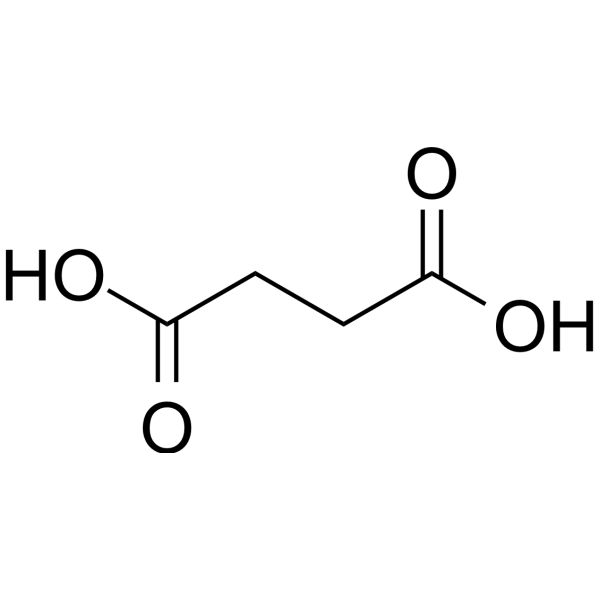
- HY-D1005A17
-
|
PEG-PPG-PEG, 11400 (Averag)
|
Biochemical Assay Reagents
|
Others
|
|
Poloxamer 238 F88 is block polymer of polyoxyethylene and polyoxypropylene with average molecular mass of 11400. Poloxamer 238 F88 reduces the aggregation of red blood cells. Poloxamer 238 F88 forms thermoreversible hydrogel, that is utilized in food additives, drug delivery carriers in cosmetics, pharmaceutical ingredients and tissue engineering .
|
-

- HY-A0103
-
|
|
|
|
|
Xanthan gum is a microbial polysaccharide produced by Xanthomonas campestris. The structure of xanthan gum is based on a cellulose backbone of β-(1-4)-linked glucose units with a trisaccharide side of mannose-glucuronic acid-mannose attached to every other glucose unit in the backbone chain. Some terminal mannose units are pyruvated and some internal mannose units are acetylated. Due to its unique rheology and gelling properties, it is widely used as a food additive, thickener and stabilizer in the food and petroleum industries.
|
-

- HY-128382
-
|
E 151
|
Enterovirus
|
Infection
|
|
Brilliant black BN (E151) is an azo dye and a food colorant . Brilliant black BN is a promising antiviral agent against EV71 infection via inhibiting the interaction between EV71 and its cellular uncoating factor cyclophilin A. Brilliant black BN has the potential for the investigation of contagious disease .
|
-
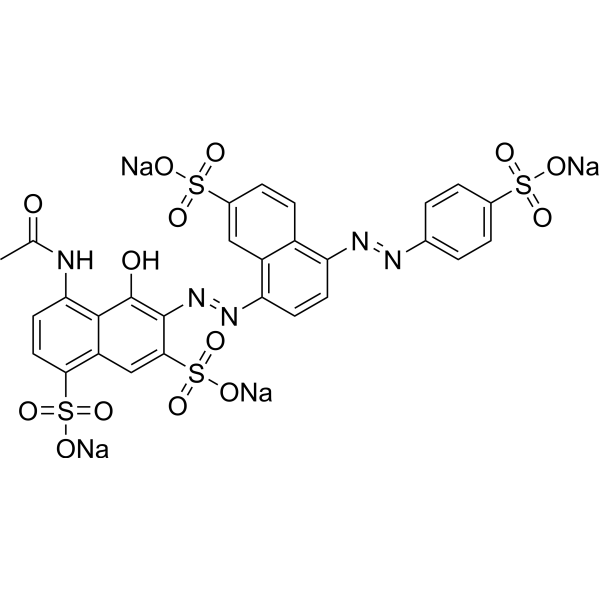
- HY-W015410
-
|
|
Endogenous Metabolite
|
Inflammation/Immunology
|
|
Disodium succinate is an anti-anxiety agent with oral activity. Disodium succinate is the salt form of Succinic acid. Disodium succinate is an intermediate product of the tricarboxylic acid cycle. Disodium succinate is an important platform chemical. Disodium succinate can be used as surfactant, additive, ion chelating agent, flavoring agent and other applications in chemical, pharmaceutical and food fields .
|
-
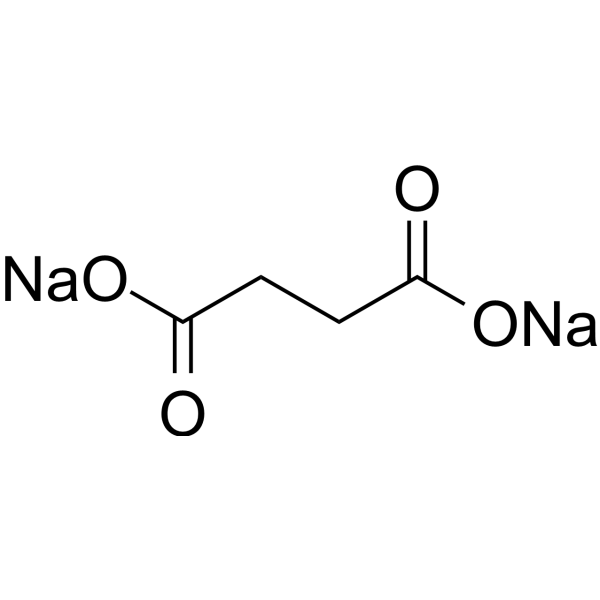
- HY-W010164
-
|
|
Biochemical Assay Reagents
|
Others
|
|
4-Hydroxybenzoate sodium, also known as sodium p-hydroxybenzoate or sodium paraben, is commonly used as a food preservative and cosmetic preservative. It can also be used as an additive in a variety of other products, including pharmaceuticals, personal care products, and industrial products. Additionally, 4-Hydroxybenzoate sodium has the potential to function as xenoestrogens, which may mimic the effects of estrogen in the body and affect hormonal balance.
|
-
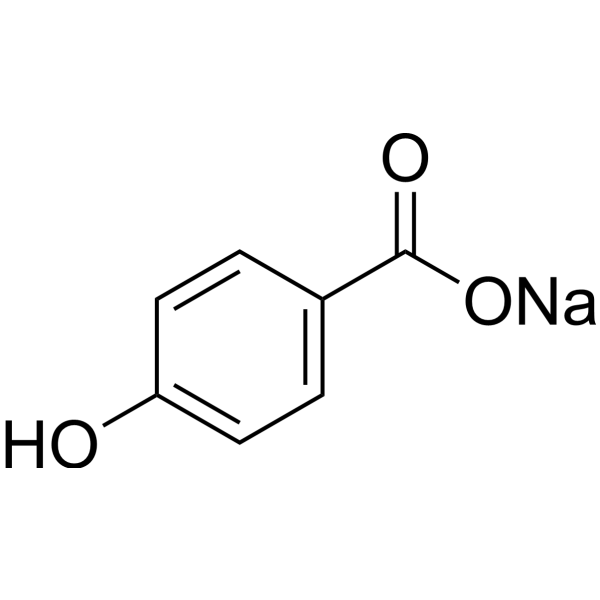
- HY-W127331
-
|
|
Biochemical Assay Reagents
|
Others
|
|
Cholesterol hexanoate is an organic compound belonging to the class of esters. It is formed from the reaction between cholesterol and caproic acid. Cholesterol hexanoate has several applications in the pharmaceutical industry, particularly as a bioactive compound with potential research potential for improving a range of medical conditions, such as high cholesterol and inflammation-related diseases. Additionally, it has potential applications as a food additive to improve texture and stability.
|
-
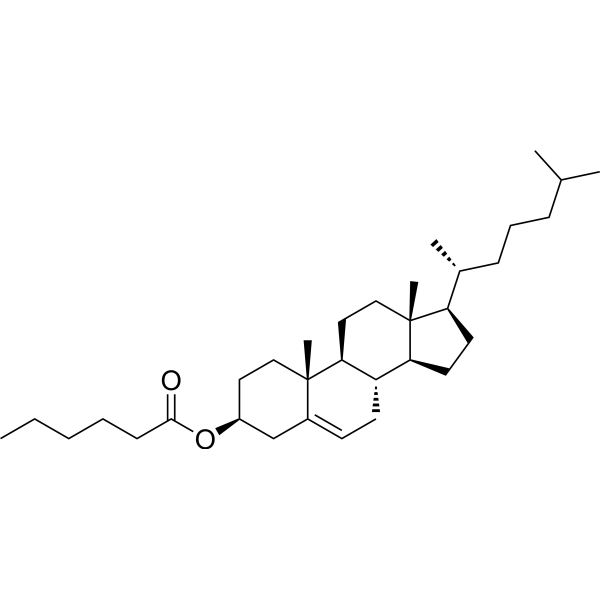
- HY-W127351
-
|
|
Biochemical Assay Reagents
|
Others
|
|
Cholesterol decanoate is an organic compound belonging to the class of esters. It is formed from the reaction between cholesterol and capric acid. Cholesterol decanoate has several applications in the pharmaceutical industry, particularly as a bioactive compound with potential research potential for improving a range of medical conditions, such as high cholesterol and inflammation-related diseases. Additionally, it has potential applications as a food additive to improve texture and stability.
|
-

- HY-B1066R
-
|
Butylated hydroxyanisole (Standard); BHA (Standard); E320 (Standard)
|
Reactive Oxygen Species
Ferroptosis
|
Neurological Disease
Inflammation/Immunology
|
|
Butylhydroxyanisole (Standard) is the analytical standard of Butylhydroxyanisole. This product is intended for research and analytical applications. Butylhydroxyanisole (Butylated hydroxyanisole) is an antioxidant used as a food additive preservative. Butylhydroxyanisole mediates liver toxicity, retardation in reproductive organ development and learning, and sleep deficit. Butylhydroxyanisole exerts neurotoxic effects and leads to disruption of the brain and nerve development . Butylhydroxyanisole is a ferroptosis inducer .
|
-
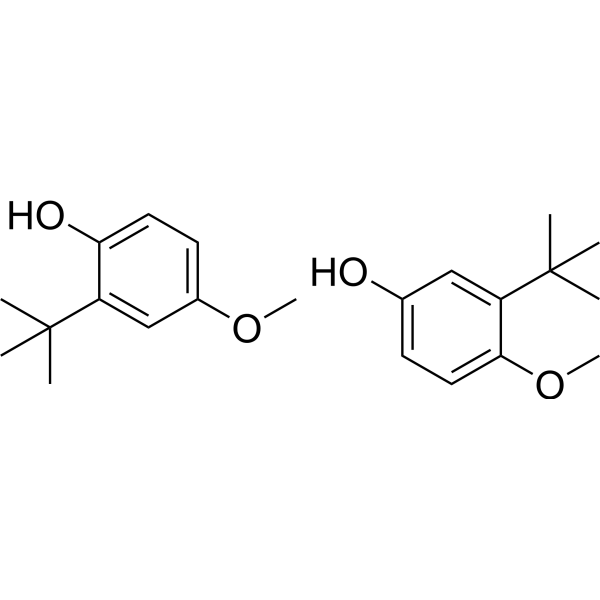
- HY-W127349
-
|
|
Biochemical Assay Reagents
|
Others
|
|
Cholesterol n-Octanoate is an organic compound belonging to the class of esters. It is formed from the reaction between cholesterol and caprylic acid. Cholesterol n-octanoate has various applications in the pharmaceutical industry, notably as a bioactive compound with potential research potential to improve a range of medical conditions, such as high cholesterol and inflammation-related diseases. Additionally, it has potential applications as a food additive to improve texture and stability.
|
-

- HY-D1005A19
-
|
PEG-PPG-PEG, 4950 (Averag)
|
Biochemical Assay Reagents
Bacterial
|
Infection
|
|
Poloxamer 333 P103 is block polymer of polyoxyethylene and polyoxypropylene with average molecular mass of 4950. Poloxamer 333 P103 exhibits antimicrobial activity, that inihibits 90% Mycobacterium avium complex at concentration of 1 mg/mL. Poloxamer 333 P103 forms thermoreversible hydrogel, that is utilized in food additives, drug delivery carriers in cosmetics, pharmaceutical ingredients and tissue engineering .
|
-

- HY-D1005A4
-
|
PEG-PPG-PEG, 1630 (Averag)
|
Biochemical Assay Reagents
Bacterial
|
Infection
|
|
Poloxamer 122 L42 is block polymer of polyoxyethylene and polyoxypropylene with average molecular mass of 1630. Poloxamer 122 L42 exhibits antimicrobial activity, that inihibits 56% Mycobacterium avium complex at concentration of 1 mg/mL. Poloxamer 122 L42 forms thermoreversible hydrogel, that is utilized in food additives, drug delivery carriers in cosmetics, pharmaceutical ingredients and tissue engineering .
|
-

- HY-D1005A8
-
|
PEG-PPG-PEG, 2000 (Averag)
|
Biochemical Assay Reagents
Bacterial
|
Infection
|
|
Poloxamer 181 L61 is block polymer of polyoxyethylene and polyoxypropylene with average molecular mass of 2000. Poloxamer 181 L61 exhibits antimicrobial activity, that inihibits 91% Mycobacterium avium complex at concentration of 1 mg/mL. Poloxamer 181 L61 forms thermoreversible hydrogel, that is utilized in food additives, drug delivery carriers in cosmetics, pharmaceutical ingredients and tissue engineering .
|
-

- HY-D1005A9
-
|
PEG-PPG-PEG, 2650 (Averag)
|
Biochemical Assay Reagents
Bacterial
|
Infection
|
|
Poloxamer 183 L63 is block polymer of polyoxyethylene and polyoxypropylene with average molecular mass of 2650. Poloxamer 183 L63 exhibits antimicrobial activity, that inihibits 83% Mycobacterium avium complex at concentration of 1 mg/mL. Poloxamer 183 L63 forms thermoreversible hydrogel, that is utilized in food additives, drug delivery carriers in cosmetics, pharmaceutical ingredients and tissue engineering .
|
-

- HY-W134423
-
|
|
Biochemical Assay Reagents
|
Others
|
|
Agar is a jelly like substance that contains agarose and agar gel. Agar can be isolated from the cell walls of red algae species such as Gelidium and Gracilaria (Ogonori). The gelation and melting of Agar is based on the hydrogen bridge (physical gels), so the gelation is reversible. Agar is widely used in food additives, plant tissue culture, microorganisms culture media, fingerprint recognition, and medical fields .
|
-

- HY-W250308
-
|
Epsilon-polylysine; ε-Polylysine; ε-PL
|
Bacterial
|
Others
|
|
Epsilon-polylysine is an antimicrobial peptide that can be produced by bacteria such as Streptomyces. Epsilon-polylysine inhibits the growth of microorganisms such as bacteria, yeasts and molds and is therefore often used as a green food additive and preservative in various food and beverage products. Epsilon-polylysine has a variety of properties, including thermal stability, resistance to acidic conditions, and broad-spectrum antimicrobial activity. Epsilon-polylysine can be loaded on other materials to form nanoparticles or form nanofiber membranes for targeted delivery to exert sustained antibacterial efficacy. Epsilon-polylysine is also used as a liposome stabilizer .
|
-
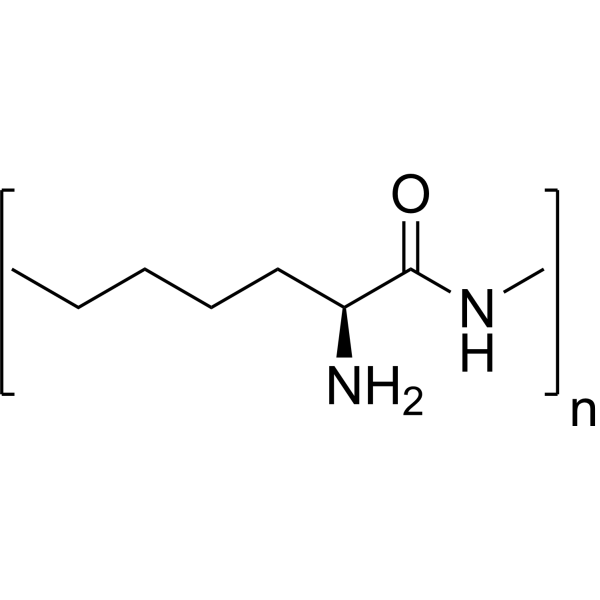
- HY-D1005A6
-
|
PEG-PPG-PEG, 2200 (Averag)
|
Biochemical Assay Reagents
|
Others
|
|
Poloxamer 124 L44 is block polymer of polyoxyethylene and polyoxypropylene with average molecular mass of 2200. Poloxamer 124 L44 reveals toxicity with an oral LD50 of 5 g/kg in albino rats. Poloxamer 124 L44 causes ocular irritation. Poloxamer 124 L44 forms thermoreversible hydrogel, that is utilized in food additives, drug delivery carriers in cosmetics, pharmaceutical ingredients and tissue engineering .
|
-

- HY-D1005A21
-
|
PEG-PPG-PEG, 6500 (Averag)
|
Biochemical Assay Reagents
Bacterial
|
Infection
|
|
Poloxamer 335 P105 is block polymer of polyoxyethylene and polyoxypropylene with average molecular mass of 6500. Poloxamer 335 P105 exhibits antimicrobial activity, that inihibits 86% Mycobacterium avium complex at concentration of 1 mg/mL. Poloxamer 334 P104 exhibits muscular toxicity. Poloxamer 334 P104 forms thermoreversible hydrogel, that is utilized in food additives, drug delivery carriers in cosmetics, pharmaceutical ingredients and tissue engineering .
|
-

- HY-D0850
-
|
Sodium tartrate dibasic dihydrate; Sodium tartrate dihydrate
|
Phosphatase
Endogenous Metabolite
|
Cardiovascular Disease
|
|
Tartaric acid disodium dehydrate (L-(+) -tartaric acid) is an orally active weak organic acid that can be isolated from grapes. Tartaric acid disodium dehydrate has vasodilatory and antihypertensive effects. Tartaric acid disodium dehydrate can be used as flavorings and antioxidants in a range of foods and beverages. Tartaric acid disodium dehydrate can be used in laser frequency doubling and optical limiting applications .
|
-

- HY-W109973
-
|
L-(+)-Tartaric acid diammonium
|
Endogenous Metabolite
|
Cardiovascular Disease
|
|
L-Tartaric acid diammonium (L-(+) -tartaric acid) is an orally active weak organic acid that can be isolated from grapes. L-Tartaric acid diammonium has vasodilatory and antihypertensive effects. L-Tartaric acid diammonium can be used as flavorings and antioxidants in a range of foods and beverages. L-Tartaric acid diammonium can be used in laser frequency doubling and optical limiting applications .
|
-

- HY-N6660
-
|
Tricaprin; Glyceryl tridecanoate
|
Endogenous Metabolite
Androgen Receptor
|
Metabolic Disease
|
|
Trisdecanoin (Tricaprin; Glyceryl tridecanoate) is an orally available precursor of decanoic acid (DA precursor) that can be hydrolyzed to decanoic acid. Trisdecanoin and its metabolite capric acid not only provide the body with a quick source of energy, but can also affect lipid metabolism. Trisdecanoin is a major component of medium chain triglycerides (MCT), which has preventive or inhibitory properties for abdominal aortic aneurysms (AAA), inhibition of cardiovascular disease, and anti-androgen (NSAA) and anti-hyperglycemic properties. Trisdecanoin can be used as an additive in food, medicine and cosmetics .
|
-
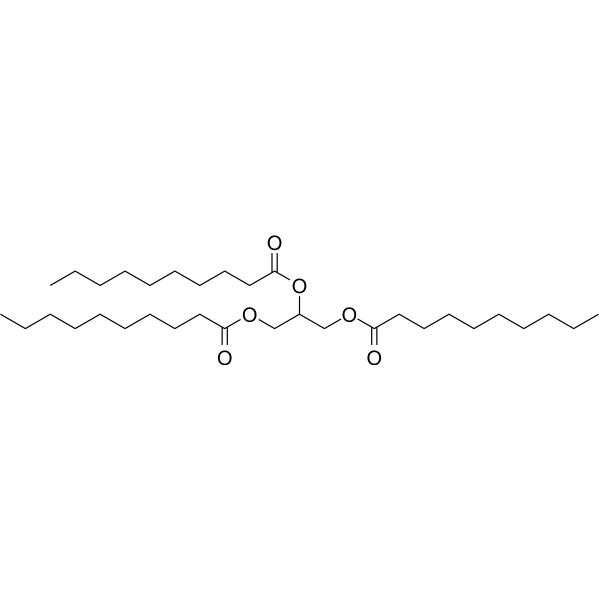
- HY-D1005A10
-
|
PEG-PPG-PEG, 2900 (Averag)
|
Biochemical Assay Reagents
Bacterial
|
Infection
Inflammation/Immunology
|
|
Poloxamer 184 L64 is block polymer of polyoxyethylene and polyoxypropylene with average molecular mass of 2900. Poloxamer 184 L64 exhibts short-term dermal toxicity characterized by slight erythema and intradermal inflammatory response. Poloxamer 184 L64 exhibits antimicrobial activity, that inihibits 60% Mycobacterium avium complex at concentration of 1 mg/mL. Poloxamer 184 L64 forms thermoreversible hydrogel, that is utilized in food additives, drug delivery carriers in cosmetics, pharmaceutical ingredients and tissue engineering .
|
-

- HY-W019883
-
|
|
Biochemical Assay Reagents
|
Others
|
|
Dipotassium hydrogen phosphate is a highly water-soluble salt which is often used as a fertilizer, food additive and buffering agent. Dipotassium hydrogen phosphate can be used as an excipient, such as pH regulator, buffer. Pharmaceutical excipients, or pharmaceutical auxiliaries, refer to other chemical substances used in the pharmaceutical process other than pharmaceutical ingredients. Pharmaceutical excipients generally refer to inactive ingredients in pharmaceutical preparations, which can improve the stability, solubility and processability of pharmaceutical preparations. Pharmaceutical excipients also affect the absorption, distribution, metabolism, and elimination (ADME) processes of co-administered drugs .
|
-
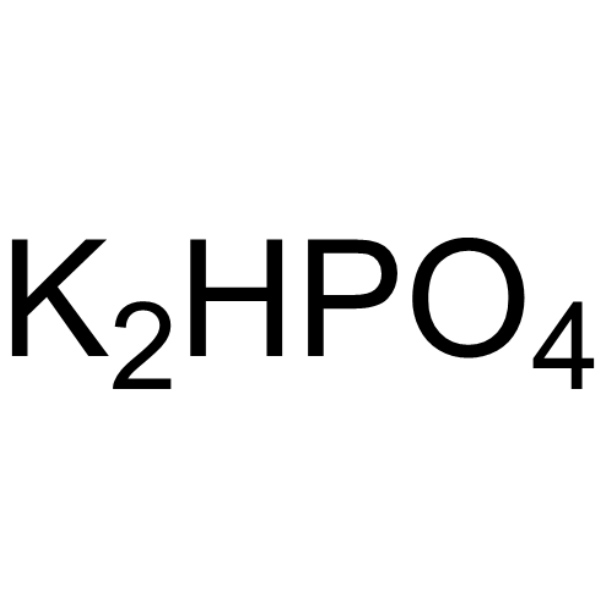
- HY-W010807
-
|
|
Biochemical Assay Reagents
|
Others
|
|
Hexadecyl palmitate is an organic compound commonly used in the cosmetic industry as an emollient, thickener and skin conditioning agent. Cetyl palmitate is derived from a mixture of cetyl alcohol (a fatty alcohol) and palmitic acid (a saturated fatty acid). It is often used in skin care products such as moisturizers, lotions, and creams to improve their texture and Helps them glide smoothly on the skin. In addition to its use in cosmetics, cetyl palmitate is used in other industries including pharmaceuticals, food additives and lubricants. Overall, it's considered safe for use in personal care products, but like any other ingredient, it may cause irritation or an allergic reaction in some people.
|
-

-
-
HY-L093
-
|
|
426 compounds
|
|
Food additives are substances added to food to maintain or improve its safety, freshness, taste, texture, or appearance. All food additives used in food undergo a safety assessment, which includes rigorous testing, before they are approved, so all food additives are generally recognized as safe substances.
MCE supplies 426 approved food additives which are safe substances and can be used for drug discovery and other research.
|
| Cat. No. |
Product Name |
Type |
-
- HY-128448
-
|
Azorubine; Acid Red 14; E122
|
Dyes
|
|
Carmoisine (Azorubine) is an azo dye that can be used as a food additive .
|
-
- HY-128382
-
|
E 151
|
Dyes
|
|
Brilliant black BN (E151) is an azo dye and a food colorant . Brilliant black BN is a promising antiviral agent against EV71 infection via inhibiting the interaction between EV71 and its cellular uncoating factor cyclophilin A. Brilliant black BN has the potential for the investigation of contagious disease .
|
| Cat. No. |
Product Name |
Type |
-
- HY-Y1324
-
|
Disodium hydrogen phosphate dodecahydrate; Disodium phosphate dodecahydrate
|
Buffer Reagents
|
|
Sodium phosphate dibasic dodecahydrate (Disodium hydrogen phosphate dodecahydrate), as a food additive, can be used to improve the texture of food .
|
-
- HY-W105970
-
|
Disodium pyrophosphate; Sodium acid pyrophosphate; SAPP
|
Biochemical Assay Reagents
|
|
Sodium pyrophosphate (Disodium pyrophosphate), a food additive, is an inorganic compound. Sodium pyrophosphate has potential hematotoxic and immunotoxic effects .
|
-
- HY-135087
-
|
|
Biochemical Assay Reagents
|
|
Caprylic/Capric Triglyceride is the triglycerides and esters prepared from fractionated vegetable oil sources and fatty acids from coconuts and palm kernel oils. Caprylic/Capric Triglyceride possesses excellent oxidation stability. Caprylic/Capric Triglyceride is used as a food additive and used in cosmetics .
|
-
- HY-W127787
-
|
L-(+)-Tartaric acid sodium hydrate
|
Biochemical Assay Reagents
|
|
L-Tartaric acid (L-(+)-Tartaric acid) sodium hydrate is the enantiomer of D-tartaric acid. L-Tartaric acid (HY-Y0293) is a white crystalline dicarboxylic acid found in many plants, such as grapes, and is one of the main organic acids in wine. L-Tartaric acid sodium hydrate which acts as a flour bulking agent and as a food additive can interact with sodium bicarbonate to produce carbon dioxide .
|
-
- HY-W014884
-
|
Decanoic Acid Ethyl Ester
|
Biochemical Assay Reagents
|
|
Ethyl decanoate is an organic compound commonly used as a flavoring and food additive. It can be used to prepare flavors and food seasonings with various flavors, and is widely used in food, flavors and cosmetics. In addition, this compound is also used as a substrate or intermediate in some biochemical reactions.
|
-
- HY-Y0319B3
-
|
|
Biochemical Assay Reagents
|
|
Potassium acetate meets analytical specification of Ph. Eur. BP E261, and can be used as food additives, medicine and cosmetics raw materials .
|
-
- HY-W012845A
-
|
|
Biochemical Assay Reagents
|
|
(E)-3-(2-Furyl)acrolein, derived from 2-acid-acid-rich acid reaction, is used in food, cosmetics and other fields, medicine and agriculture. In the food industry, (E)-3-(2-Furyl)acrolein, as a natural seasoning food additive, has an important seasoning effect.
|
-
- HY-W009684
-
|
Ethyl dodecanoate
|
Biochemical Assay Reagents
|
|
Ethyl Laurate is an organic compound commonly used as a flavoring and food additive. It can be used to make fruit, mint and sweet flavors, and is widely used in some food processing and cosmetic production. In addition, this compound is also used as a reagent and intermediate in some organic synthesis reactions.
|
-
- HY-W009443
-
|
Diethyl sebacate
|
Biochemical Assay Reagents
|
|
Diethyl decanedioate is an organic compound commonly used as a raw material for flavors and food additives. It can be used to make fruit and mint flavors, and is widely used in some food processing and cosmetic production. In addition, this compound is also used as a reagent and intermediate in some organic synthesis reactions.
|
-
- HY-W133982
-
|
|
Biochemical Assay Reagents
|
|
Corn steep liquor, a food industrial by-product, is a nutritional additive in the liquid culture medium of fungus. Corn steep liquor can increase the production of fairy chemicals and mycelia .
|
-
- HY-W016278
-
|
|
Biochemical Assay Reagents
|
|
Gamma-undecalactone consists of a five-membered dihydrofuran ring with an ester group and a heptyl chain. This compound has a fruity smell and is commonly used as a flavor additive in various food and beverage products such as coffee, tea and baked goods.
|
-
- HY-W250311
-
|
|
Biochemical Assay Reagents
|
|
DL-Aspartic acid (hemimagnesium salt is DL-aspartic acid salt. DL-aspartic acid hemimagnesium salt is a commonly used food supplement and food additive, because it can promote the synthesis of protein in the human body, and has a positive effect on the nervous system and The production of cardiovascular system has a certain protective effect. In addition, due to some chemical reactions in the industry, DL-aspartic acid semi-magnesium salt can also be obtained.
|
-
- HY-D1005A11
-
|
PEG-PPG-PEG, 3400 (Averag)
|
Co-solvents
|
|
Poloxamer 185 P65 is block polymer of polyoxyethylene and polyoxypropylene with average molecular mass of 3400. Poloxamer 185 P65 forms thermoreversible hydrogel, that is utilized in food additives, drug delivery carriers in cosmetics, pharmaceutical ingredients and tissue engineering .
|
-
- HY-D1005A12
-
|
PEG-PPG-PEG, 2750 (Averag)
|
Co-solvents
|
|
Poloxamer 212 L72 is block polymer of polyoxyethylene and polyoxypropylene with average molecular mass of 2750. Poloxamer 212 L72 forms thermoreversible hydrogel, that is utilized in food additives, drug delivery carriers in cosmetics, pharmaceutical ingredients and tissue engineering .
|
-
- HY-D1005A13
-
|
PEG-PPG-PEG, 4150 (Averag)
|
Co-solvents
|
|
Poloxamer 215 P75 is block polymer of polyoxyethylene and polyoxypropylene with average molecular mass of 4150. Poloxamer 215 P75 forms thermoreversible hydrogel, that is utilized in food additives, drug delivery carriers in cosmetics, pharmaceutical ingredients and tissue engineering .
|
-
- HY-D1005A15
-
|
PEG-PPG-PEG, 4200 (Averag)
|
Co-solvents
|
|
Poloxamer 234 P84 is is block polymer of polyoxyethylene and polyoxypropylene with average molecular mass of 4200. Poloxamer 234 P84 forms thermoreversible hydrogel, that is utilized in food additives, drug delivery carriers in cosmetics, pharmaceutical ingredients and tissue engineering .
|
-
- HY-D1005A2
-
|
PEG-PPG-PEG, 1900 (Averag)
|
Co-solvents
|
|
Poloxamer 105 L35 is block polymer of polyoxyethylene and polyoxypropylene with average molecular mass of 1900. Poloxamer 105 L35 forms thermoreversible hydrogel, that is utilized in food additives, drug delivery carriers in cosmetics, pharmaceutical ingredients and tissue engineering .
|
-
- HY-D1005A20
-
|
PEG-PPG-PEG, 5900 (Averag)
|
Co-solvents
|
|
Poloxamer 334 P104 is block polymer of polyoxyethylene and polyoxypropylene with average molecular mass of 5900. Poloxamer 334 P104 forms thermoreversible hydrogel, that is utilized in food additives, drug delivery carriers in cosmetics, pharmaceutical ingredients and tissue engineering .
|
-
- HY-D1005A5
-
|
PEG-PPG-PEG, 1850 (Averag)
|
Co-solvents
|
|
Poloxamer 123 L43 is block polymer of polyoxyethylene and polyoxypropylene with average molecular mass of 1850. Poloxamer 123 L43 forms thermoreversible hydrogel, that is utilized in food additives, drug delivery carriers in cosmetics, pharmaceutical ingredients and tissue engineering .
|
-
- HY-D1005A7
-
|
PEG-PPG-PEG, 2400 (Averag)
|
Co-solvents
|
|
Poloxamer 125 L45 is block polymer of polyoxyethylene and polyoxypropylene with average molecular mass of 2400. Poloxamer 125 L45 forms thermoreversible hydrogel, that is utilized in food additives, drug delivery carriers in cosmetics, pharmaceutical ingredients and tissue engineering .
|
-
- HY-W250303
-
|
Hydroxybutanedioic acid disodium salt; E 296 disodium salt
|
Biochemical Assay Reagents
|
|
Sodium DL-Malate is an organic compound commonly used as a food additive, buffer and nutritional supplement. It contains sodium and malic acid. Malic acid disodium salt has several properties suitable for these applications, including the ability to enhance food flavor, improve texture and regulate acidity. Additionally, it can be used as a dietary supplement due to its potential health benefits, including improved energy production, reduced fatigue, and enhanced athletic performance.
|
-
- HY-Y0308D
-
|
Disodium hydrogen phosphate, meets analytical specification of Ph. Eur. BP USP FCC E339
|
Biochemical Assay Reagents
|
|
Sodium phosphate dibasic is commonly used as a food additive, buffer and laboratory reagent. Sodium phosphate dibasic has unique chemical properties that make it an important ingredient in the manufacture of fertilizers, detergents and water treatment products. Additionally, it is used in various medical applications such as osmotic laxatives and electrolyte replacement solutions .
|
-
- HY-W005355
-
|
|
Biochemical Assay Reagents
|
|
Sodium 2-oxobutanoate is an organic compound commonly used as a food additive and industrial raw material. It can be used as an acidity regulator, leavening agent and preservative, and is often used in the fields of bread, baked goods and canning. In addition, the compound is used in the production of certain industrial products, such as in plastics, textiles and dyes.
|
-
- HY-D1005A17
-
|
PEG-PPG-PEG, 11400 (Averag)
|
Co-solvents
|
|
Poloxamer 238 F88 is block polymer of polyoxyethylene and polyoxypropylene with average molecular mass of 11400. Poloxamer 238 F88 reduces the aggregation of red blood cells. Poloxamer 238 F88 forms thermoreversible hydrogel, that is utilized in food additives, drug delivery carriers in cosmetics, pharmaceutical ingredients and tissue engineering .
|
-
- HY-W010164
-
|
|
Biochemical Assay Reagents
|
|
4-Hydroxybenzoate sodium, also known as sodium p-hydroxybenzoate or sodium paraben, is commonly used as a food preservative and cosmetic preservative. It can also be used as an additive in a variety of other products, including pharmaceuticals, personal care products, and industrial products. Additionally, 4-Hydroxybenzoate sodium has the potential to function as xenoestrogens, which may mimic the effects of estrogen in the body and affect hormonal balance.
|
-
- HY-W127331
-
|
|
Biochemical Assay Reagents
|
|
Cholesterol hexanoate is an organic compound belonging to the class of esters. It is formed from the reaction between cholesterol and caproic acid. Cholesterol hexanoate has several applications in the pharmaceutical industry, particularly as a bioactive compound with potential research potential for improving a range of medical conditions, such as high cholesterol and inflammation-related diseases. Additionally, it has potential applications as a food additive to improve texture and stability.
|
-
- HY-W127351
-
|
|
Biochemical Assay Reagents
|
|
Cholesterol decanoate is an organic compound belonging to the class of esters. It is formed from the reaction between cholesterol and capric acid. Cholesterol decanoate has several applications in the pharmaceutical industry, particularly as a bioactive compound with potential research potential for improving a range of medical conditions, such as high cholesterol and inflammation-related diseases. Additionally, it has potential applications as a food additive to improve texture and stability.
|
-
- HY-W127349
-
|
|
Biochemical Assay Reagents
|
|
Cholesterol n-Octanoate is an organic compound belonging to the class of esters. It is formed from the reaction between cholesterol and caprylic acid. Cholesterol n-octanoate has various applications in the pharmaceutical industry, notably as a bioactive compound with potential research potential to improve a range of medical conditions, such as high cholesterol and inflammation-related diseases. Additionally, it has potential applications as a food additive to improve texture and stability.
|
-
- HY-D1005A19
-
|
PEG-PPG-PEG, 4950 (Averag)
|
Co-solvents
|
|
Poloxamer 333 P103 is block polymer of polyoxyethylene and polyoxypropylene with average molecular mass of 4950. Poloxamer 333 P103 exhibits antimicrobial activity, that inihibits 90% Mycobacterium avium complex at concentration of 1 mg/mL. Poloxamer 333 P103 forms thermoreversible hydrogel, that is utilized in food additives, drug delivery carriers in cosmetics, pharmaceutical ingredients and tissue engineering .
|
-
- HY-D1005A4
-
|
PEG-PPG-PEG, 1630 (Averag)
|
Co-solvents
|
|
Poloxamer 122 L42 is block polymer of polyoxyethylene and polyoxypropylene with average molecular mass of 1630. Poloxamer 122 L42 exhibits antimicrobial activity, that inihibits 56% Mycobacterium avium complex at concentration of 1 mg/mL. Poloxamer 122 L42 forms thermoreversible hydrogel, that is utilized in food additives, drug delivery carriers in cosmetics, pharmaceutical ingredients and tissue engineering .
|
-
- HY-D1005A8
-
|
PEG-PPG-PEG, 2000 (Averag)
|
Co-solvents
|
|
Poloxamer 181 L61 is block polymer of polyoxyethylene and polyoxypropylene with average molecular mass of 2000. Poloxamer 181 L61 exhibits antimicrobial activity, that inihibits 91% Mycobacterium avium complex at concentration of 1 mg/mL. Poloxamer 181 L61 forms thermoreversible hydrogel, that is utilized in food additives, drug delivery carriers in cosmetics, pharmaceutical ingredients and tissue engineering .
|
-
- HY-D1005A9
-
|
PEG-PPG-PEG, 2650 (Averag)
|
Co-solvents
|
|
Poloxamer 183 L63 is block polymer of polyoxyethylene and polyoxypropylene with average molecular mass of 2650. Poloxamer 183 L63 exhibits antimicrobial activity, that inihibits 83% Mycobacterium avium complex at concentration of 1 mg/mL. Poloxamer 183 L63 forms thermoreversible hydrogel, that is utilized in food additives, drug delivery carriers in cosmetics, pharmaceutical ingredients and tissue engineering .
|
-
- HY-W134423
-
|
|
Biochemical Assay Reagents
|
|
Agar is a jelly like substance that contains agarose and agar gel. Agar can be isolated from the cell walls of red algae species such as Gelidium and Gracilaria (Ogonori). The gelation and melting of Agar is based on the hydrogen bridge (physical gels), so the gelation is reversible. Agar is widely used in food additives, plant tissue culture, microorganisms culture media, fingerprint recognition, and medical fields .
|
-
- HY-W250308
-
|
Epsilon-polylysine; ε-Polylysine; ε-PL
|
Biochemical Assay Reagents
|
|
Epsilon-polylysine is an antimicrobial peptide that can be produced by bacteria such as Streptomyces. Epsilon-polylysine inhibits the growth of microorganisms such as bacteria, yeasts and molds and is therefore often used as a green food additive and preservative in various food and beverage products. Epsilon-polylysine has a variety of properties, including thermal stability, resistance to acidic conditions, and broad-spectrum antimicrobial activity. Epsilon-polylysine can be loaded on other materials to form nanoparticles or form nanofiber membranes for targeted delivery to exert sustained antibacterial efficacy. Epsilon-polylysine is also used as a liposome stabilizer .
|
-
- HY-D1005A6
-
|
PEG-PPG-PEG, 2200 (Averag)
|
Co-solvents
|
|
Poloxamer 124 L44 is block polymer of polyoxyethylene and polyoxypropylene with average molecular mass of 2200. Poloxamer 124 L44 reveals toxicity with an oral LD50 of 5 g/kg in albino rats. Poloxamer 124 L44 causes ocular irritation. Poloxamer 124 L44 forms thermoreversible hydrogel, that is utilized in food additives, drug delivery carriers in cosmetics, pharmaceutical ingredients and tissue engineering .
|
-
- HY-D1005A21
-
|
PEG-PPG-PEG, 6500 (Averag)
|
Co-solvents
|
|
Poloxamer 335 P105 is block polymer of polyoxyethylene and polyoxypropylene with average molecular mass of 6500. Poloxamer 335 P105 exhibits antimicrobial activity, that inihibits 86% Mycobacterium avium complex at concentration of 1 mg/mL. Poloxamer 334 P104 exhibits muscular toxicity. Poloxamer 334 P104 forms thermoreversible hydrogel, that is utilized in food additives, drug delivery carriers in cosmetics, pharmaceutical ingredients and tissue engineering .
|
-
- HY-D0850
-
|
Sodium tartrate dibasic dihydrate; Sodium tartrate dihydrate
|
Biochemical Assay Reagents
|
|
Tartaric acid disodium dehydrate (L-(+) -tartaric acid) is an orally active weak organic acid that can be isolated from grapes. Tartaric acid disodium dehydrate has vasodilatory and antihypertensive effects. Tartaric acid disodium dehydrate can be used as flavorings and antioxidants in a range of foods and beverages. Tartaric acid disodium dehydrate can be used in laser frequency doubling and optical limiting applications .
|
-
- HY-W109973
-
|
L-(+)-Tartaric acid diammonium
|
Biochemical Assay Reagents
|
|
L-Tartaric acid diammonium (L-(+) -tartaric acid) is an orally active weak organic acid that can be isolated from grapes. L-Tartaric acid diammonium has vasodilatory and antihypertensive effects. L-Tartaric acid diammonium can be used as flavorings and antioxidants in a range of foods and beverages. L-Tartaric acid diammonium can be used in laser frequency doubling and optical limiting applications .
|
-
- HY-D1005A10
-
|
PEG-PPG-PEG, 2900 (Averag)
|
Co-solvents
|
|
Poloxamer 184 L64 is block polymer of polyoxyethylene and polyoxypropylene with average molecular mass of 2900. Poloxamer 184 L64 exhibts short-term dermal toxicity characterized by slight erythema and intradermal inflammatory response. Poloxamer 184 L64 exhibits antimicrobial activity, that inihibits 60% Mycobacterium avium complex at concentration of 1 mg/mL. Poloxamer 184 L64 forms thermoreversible hydrogel, that is utilized in food additives, drug delivery carriers in cosmetics, pharmaceutical ingredients and tissue engineering .
|
-
- HY-W010807
-
|
|
Biochemical Assay Reagents
|
|
Hexadecyl palmitate is an organic compound commonly used in the cosmetic industry as an emollient, thickener and skin conditioning agent. Cetyl palmitate is derived from a mixture of cetyl alcohol (a fatty alcohol) and palmitic acid (a saturated fatty acid). It is often used in skin care products such as moisturizers, lotions, and creams to improve their texture and Helps them glide smoothly on the skin. In addition to its use in cosmetics, cetyl palmitate is used in other industries including pharmaceuticals, food additives and lubricants. Overall, it's considered safe for use in personal care products, but like any other ingredient, it may cause irritation or an allergic reaction in some people.
|
| Cat. No. |
Product Name |
Target |
Research Area |
-
- HY-P1032S
-
|
|
Isotope-Labeled Compounds
Endogenous Metabolite
|
Others
|
|
Angiotensin I- 13C19, 15N3 (human, mouse, rat) is the 13C and 15N labeled Angiotensin I (human, mouse, rat) (HY-P1032). Cellulose (Pectin glycosidase) is a natural high molecular weight polysaccharide found in many plants and organisms. It is widely used in manufacturing industries, such as in paper making, textiles, food and medicine, etc. As a renewable resource, Cellulose is biodegradable and sustainable, and can also be used to manufacture chemicals such as Cellulose Esters, Cellulose Acetate and Cellulose Nitrate. In addition, Cellulose is often used as a food additive to increase the stability and quality of food .
|
| Cat. No. |
Product Name |
Category |
Target |
Chemical Structure |
| Cat. No. |
Product Name |
Chemical Structure |
-
- HY-Y1069S
-
|
|
|
(S)-Malic acid-d3 is the deuterium labeled (S)-Malic acid. (S)-Malic acid ((S)-2-Hydroxysuccinic acid) is a dicarboxylic acid in naturally occurring form, contributes to the pleasantly sour taste of fruits and is used as a food additive[1][2].
|
-

-
- HY-W010320S
-
|
|
|
Ethyl maltol-d5 is the deuterium labeled Ethyl maltol. Ethyl maltol (2-Ethyl-3-hydroxy-4H-pyran-4-one), an odor-active (OA) compound, is an important food additive and the main component of a type of incense added to food[1][2].
|
-

-
- HY-B1431S
-
|
|
|
Butylparaben-d4 is the deuterium labeled Butylparaben. Butylparaben is an organic compound, has proven to be a highly successful antimicrobial preservative in cosmetics, also used in medication suspensions, and as a flavoring additive in food.
|
-

-
- HY-B1431S1
-
|
|
|
Butylparaben- 13C6 is the 13C labeled Butylparaben[1]. Butylparaben is an organic compound, has proven to be a highly successful antimicrobial preservative in cosmetics, also used in medication suspensions, and as a flavoring additive in food.
|
-

-
- HY-N0216S2
-
|
|
|
Benzoic acid- 13C is the 13C-labeled Benzoic acid. Benzoic acid is an aromatic alcohol existing naturally in many plants and is a common additive to food, drinks, cosmetics and other products. It acts as preservatives through inhibiting both bacteria and fungi.
|
-

-
- HY-N0216S1
-
|
|
|
Benzoic acid- 13C6 is the 13C-labeled Benzoic acid. Benzoic acid is an aromatic alcohol existing naturally in many plants and is a common additive to food, drinks, cosmetics and other products. It acts as preservatives through inhibiting both bacteria and fungi.
|
-

-
- HY-B2221S5
-
|
|
|
U- 13C Cellulose from broccoli is the 13C labeled Cellulose (HY-B2221). Cellulose is a natural high molecular weight polysaccharide found in many plants and organisms. It is widely used in manufacturing industries, such as in paper making, textiles, food and medicine, etc. As a renewable resource, Cellulose is biodegradable and sustainable, and can also be used to manufacture chemicals such as Cellulose Esters, Cellulose Acetate and Cellulose Nitrate. In addition, Cellulose is often used as a food additive to increase the stability and quality of food .
|
-

-
- HY-B2221S1
-
|
|
|
U- 13C Cellulose from chicory is the 13C labeled Cellulose (HY-B2221). Cellulose (Pectin glycosidase) is a natural high molecular weight polysaccharide found in many plants and organisms. It is widely used in manufacturing industries, such as in paper making, textiles, food and medicine, etc. As a renewable resource, Cellulose is biodegradable and sustainable, and can also be used to manufacture chemicals such as Cellulose Esters, Cellulose Acetate and Cellulose Nitrate. In addition, Cellulose is often used as a food additive to increase the stability and quality of food .
|
-

-
- HY-N0216S
-
|
|
|
Benzoic acid-d5 is a deuterium substitute for Benzoic acid. Benzoic acid is an aromatic alcohol that occurs naturally in many plants and is a common additive in food, beverages, cosmetics and other products. Benzoic acid can act as a preservative by inhibiting bacteria and fungi[1][2].
|
-

-
- HY-B2221S
-
|
|
|
U- 13C Cellulose high DP from potato is the 13C labeled Cellulose (HY-B2221). Cellulose (Pectin glycosidase) is a natural high molecular weight polysaccharide found in many plants and organisms. It is widely used in manufacturing industries, such as in paper making, textiles, food and medicine, etc. As a renewable resource, Cellulose is biodegradable and sustainable, and can also be used to manufacture chemicals such as Cellulose Esters, Cellulose Acetate and Cellulose Nitrate. In addition, Cellulose is often used as a food additive to increase the stability and quality of food .
|
-

-
- HY-B2221S3
-
|
|
|
U- 13C Cellulose high DP from maize is the 13C labeled Cellulose (HY-B2221). Cellulose (Pectin glycosidase) is a natural high molecular weight polysaccharide found in many plants and organisms. It is widely used in manufacturing industries, such as in paper making, textiles, food and medicine, etc. As a renewable resource, Cellulose is biodegradable and sustainable, and can also be used to manufacture chemicals such as Cellulose Esters, Cellulose Acetate and Cellulose Nitrate. In addition, Cellulose is often used as a food additive to increase the stability and quality of food .
|
-

-
- HY-Y0121S
-
|
|
|
Ethyl cinnamate-d5 is the deuterium labeled Ethyl cinnamate[1]. Ethyl cinnamate is a fragrance ingredient used in many fragrance compounds. Ethyl cinnamate is a food flavor and additive for cosmetic products. Ethyl cinnamate is also an excellent clearing reagent for mammalian tissues[2][3].
|
-

-
- HY-P1032S
-
|
|
|
Angiotensin I- 13C19, 15N3 (human, mouse, rat) is the 13C and 15N labeled Angiotensin I (human, mouse, rat) (HY-P1032). Cellulose (Pectin glycosidase) is a natural high molecular weight polysaccharide found in many plants and organisms. It is widely used in manufacturing industries, such as in paper making, textiles, food and medicine, etc. As a renewable resource, Cellulose is biodegradable and sustainable, and can also be used to manufacture chemicals such as Cellulose Esters, Cellulose Acetate and Cellulose Nitrate. In addition, Cellulose is often used as a food additive to increase the stability and quality of food .
|
-

Your information is safe with us. * Required Fields.
Inquiry Information
- Product Name:
- Cat. No.:
- Quantity:
- MCE Japan Authorized Agent:









































































































